Hataitai Shopping Centre
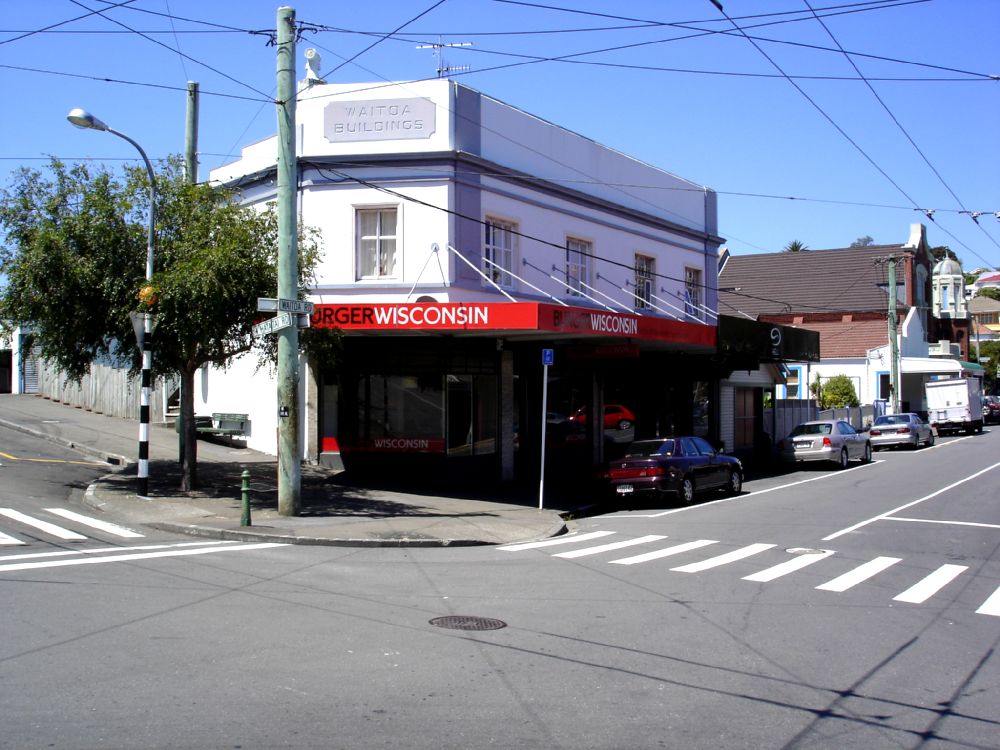
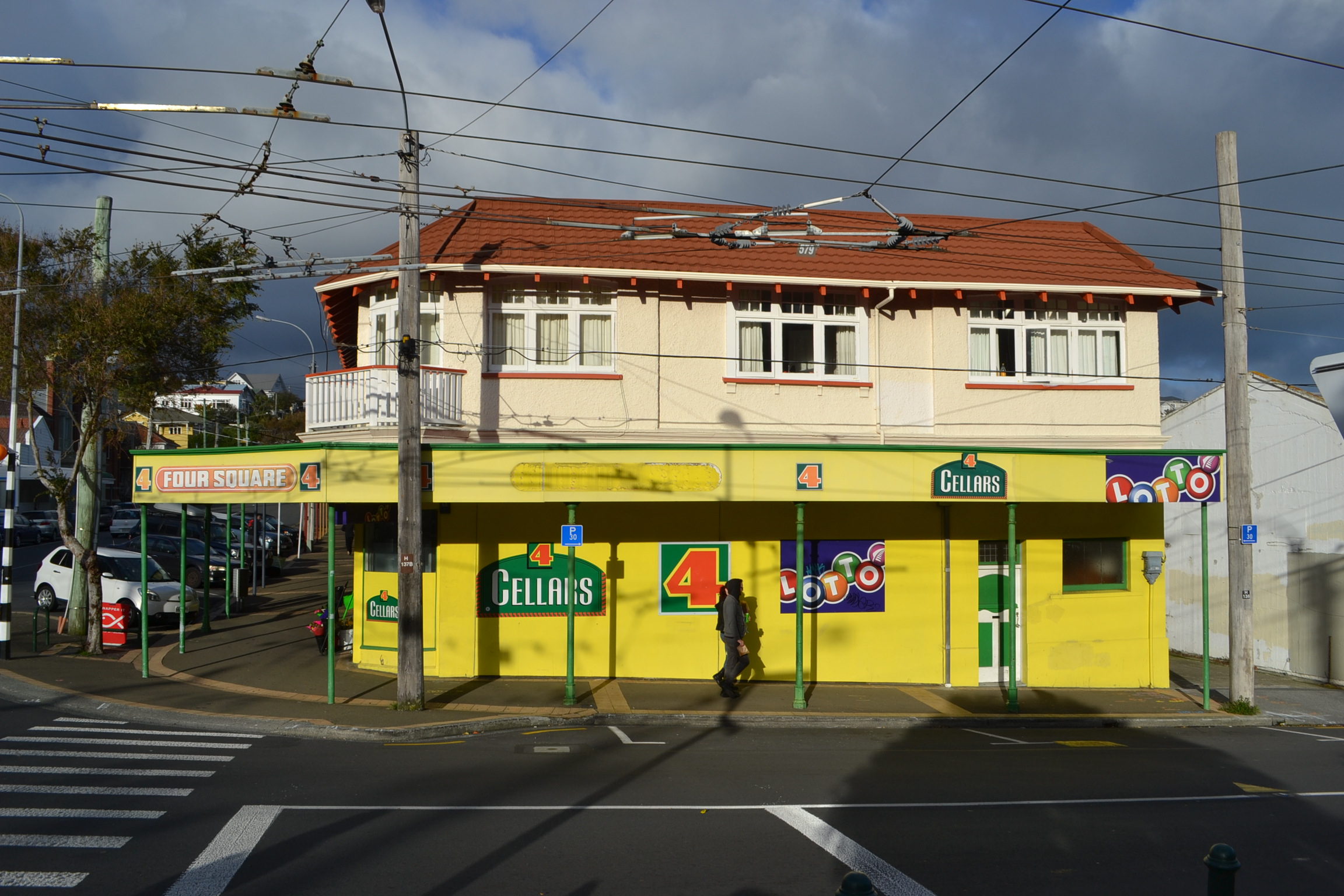
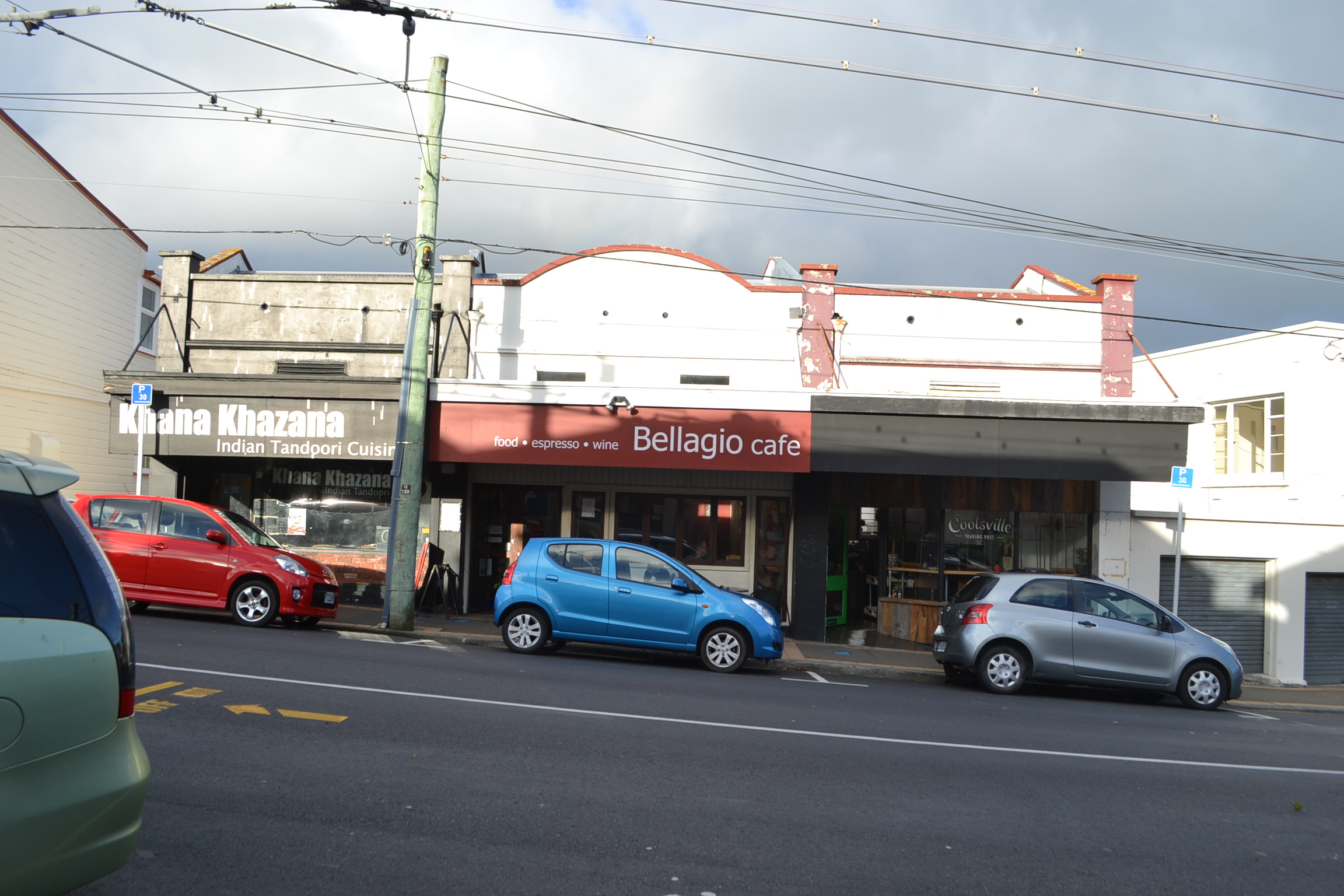
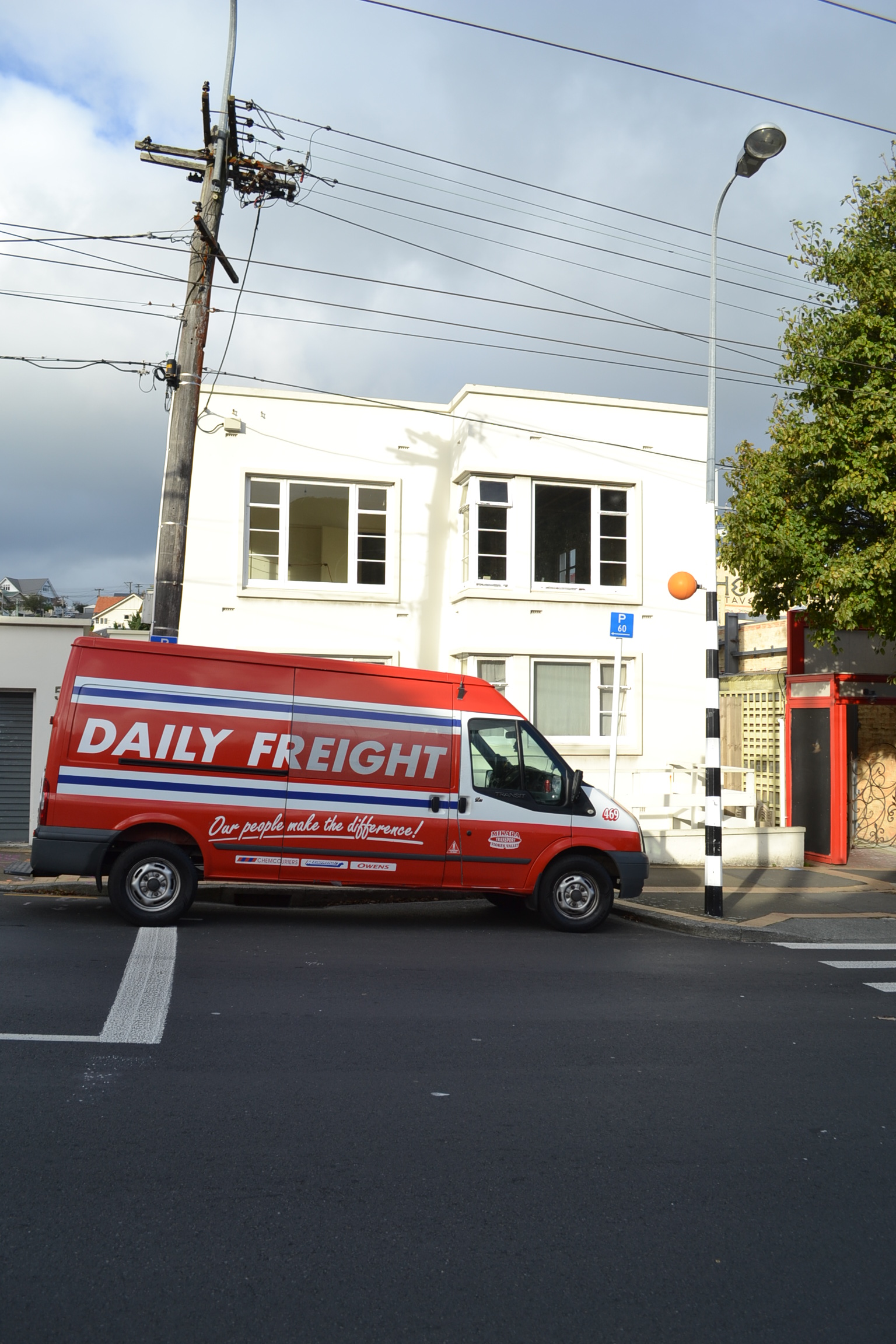
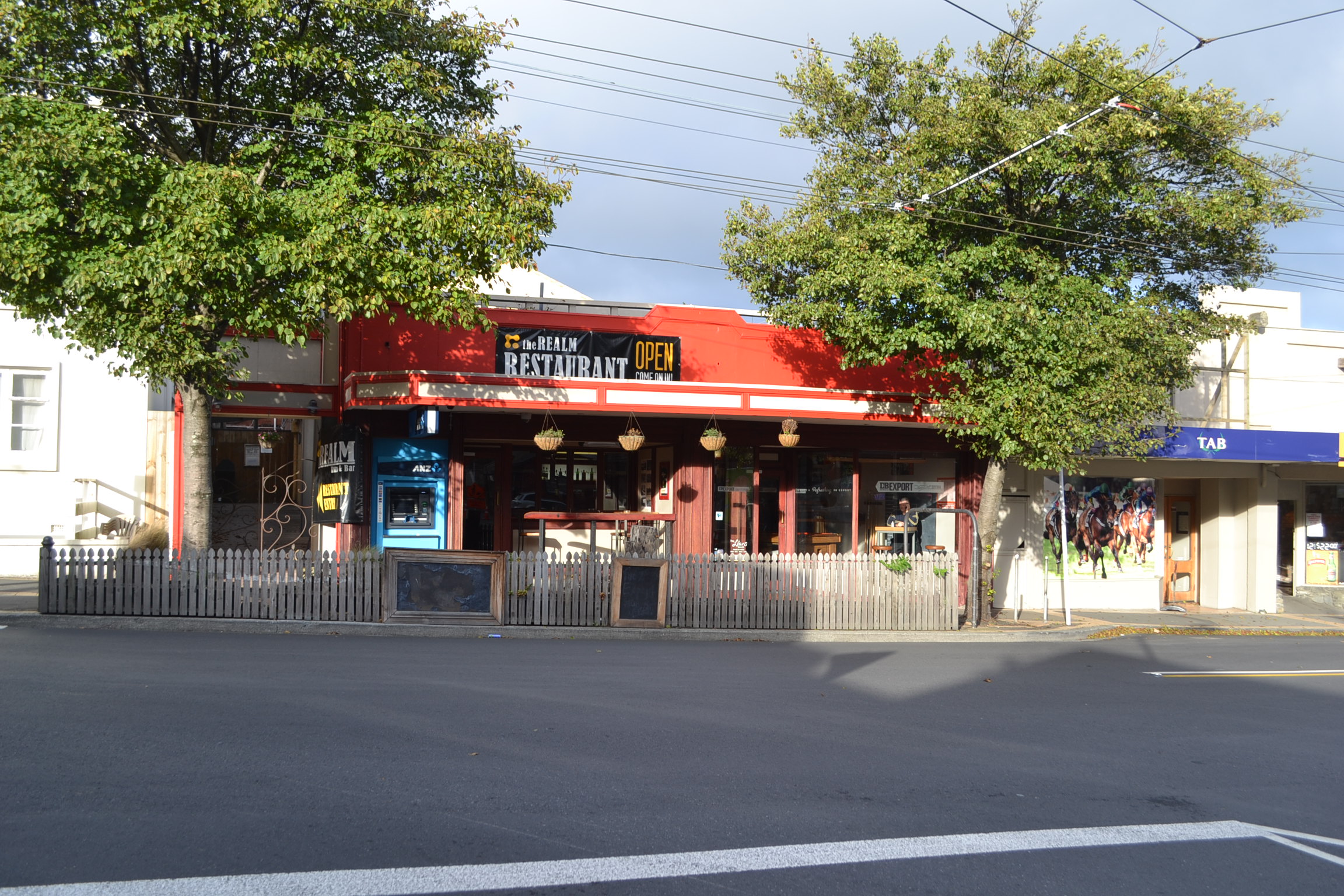
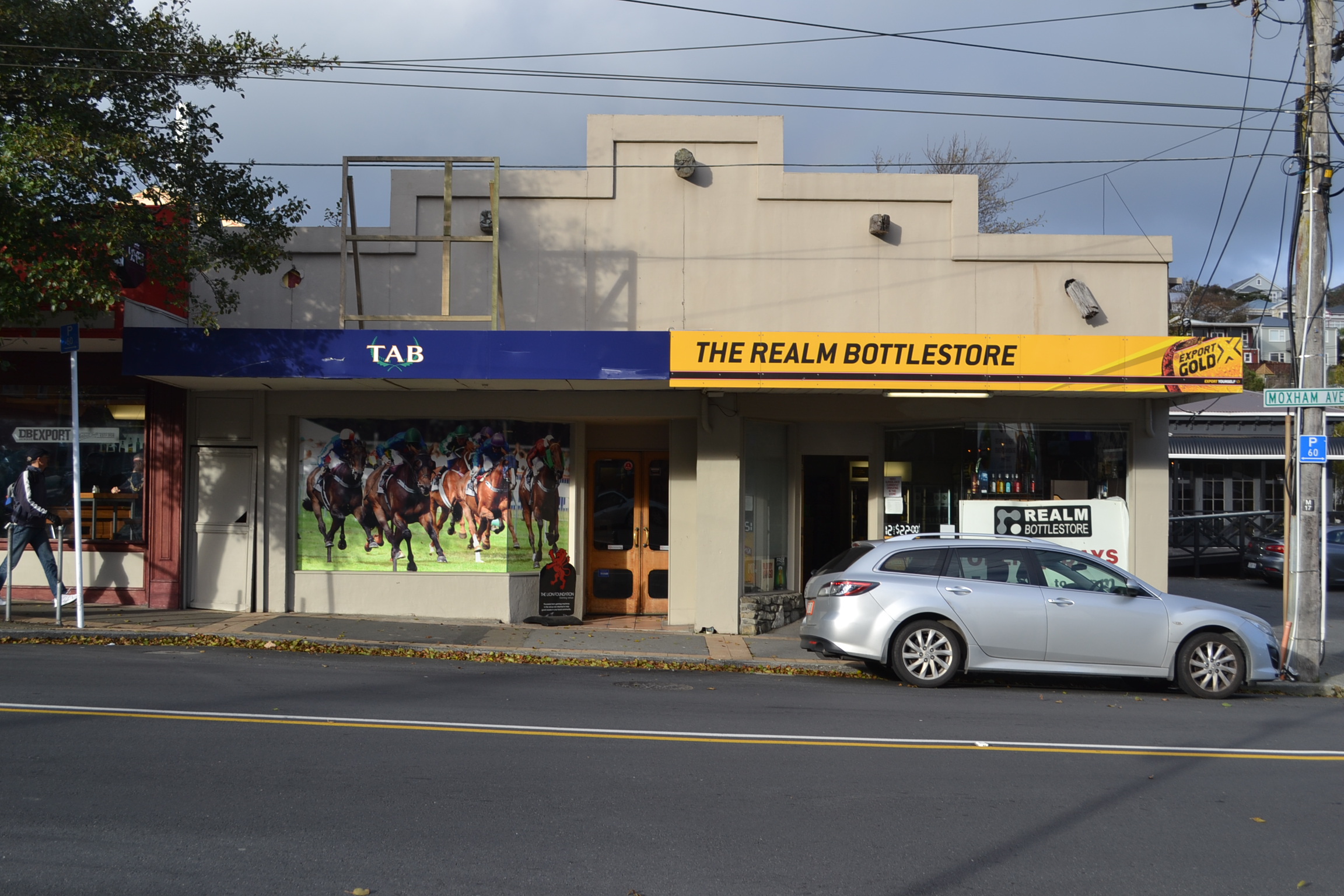
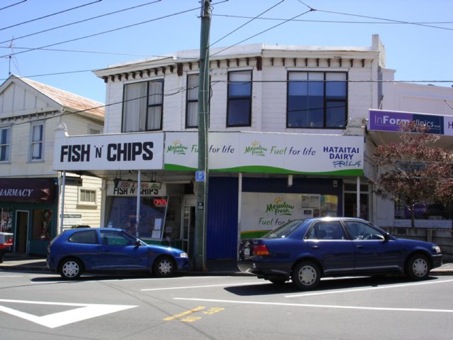
2 Moxham Avenue. Image: WCC, 2008
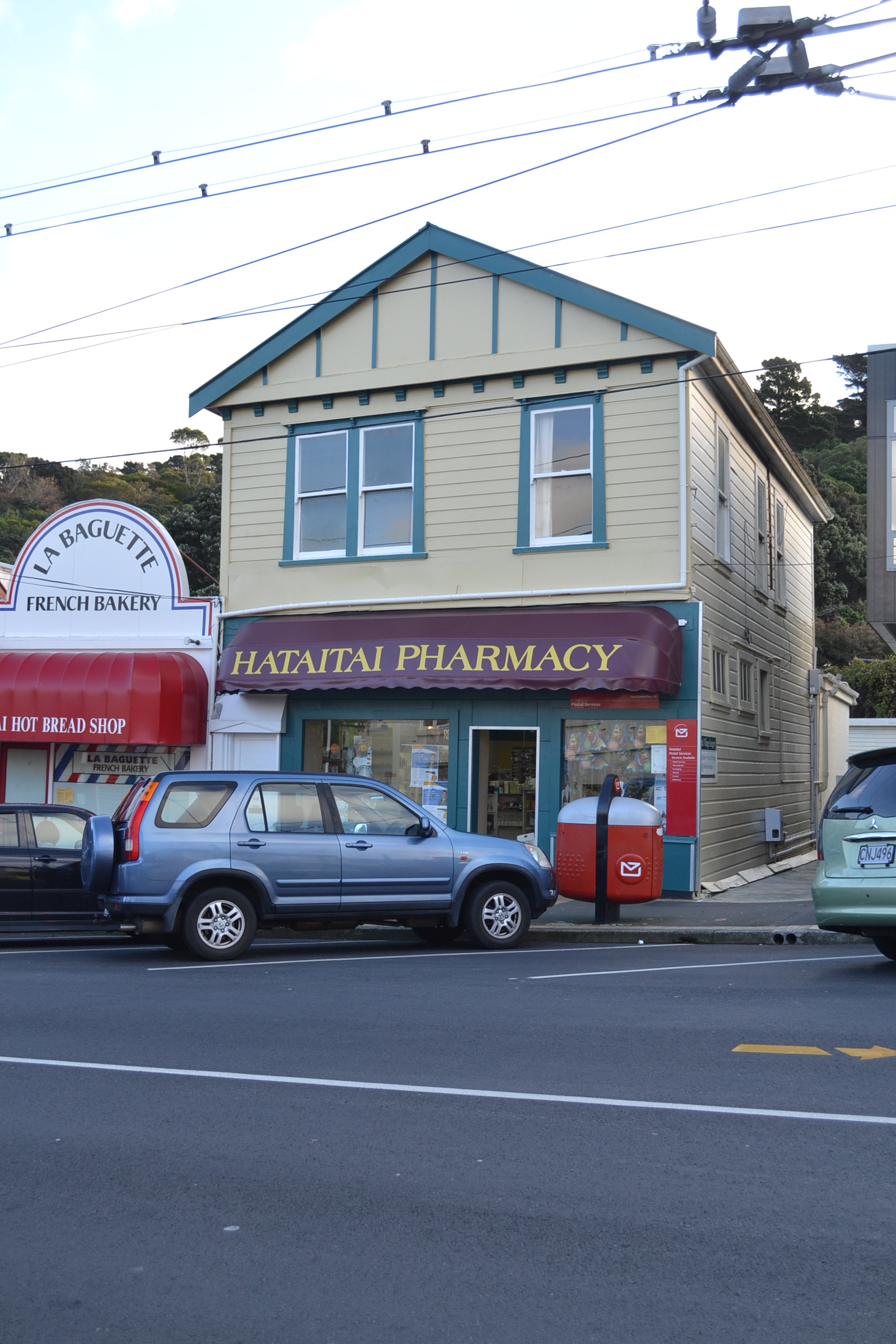
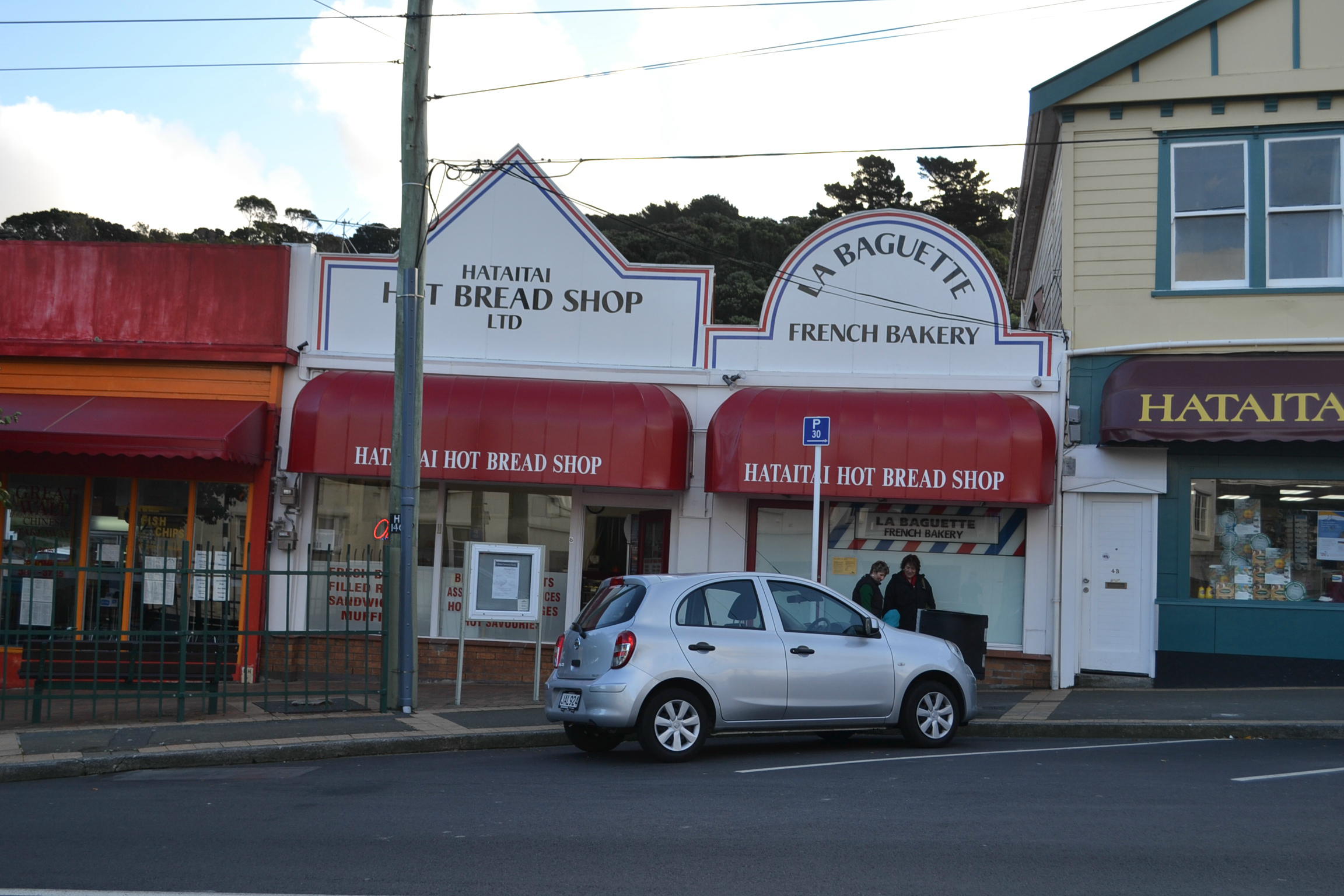
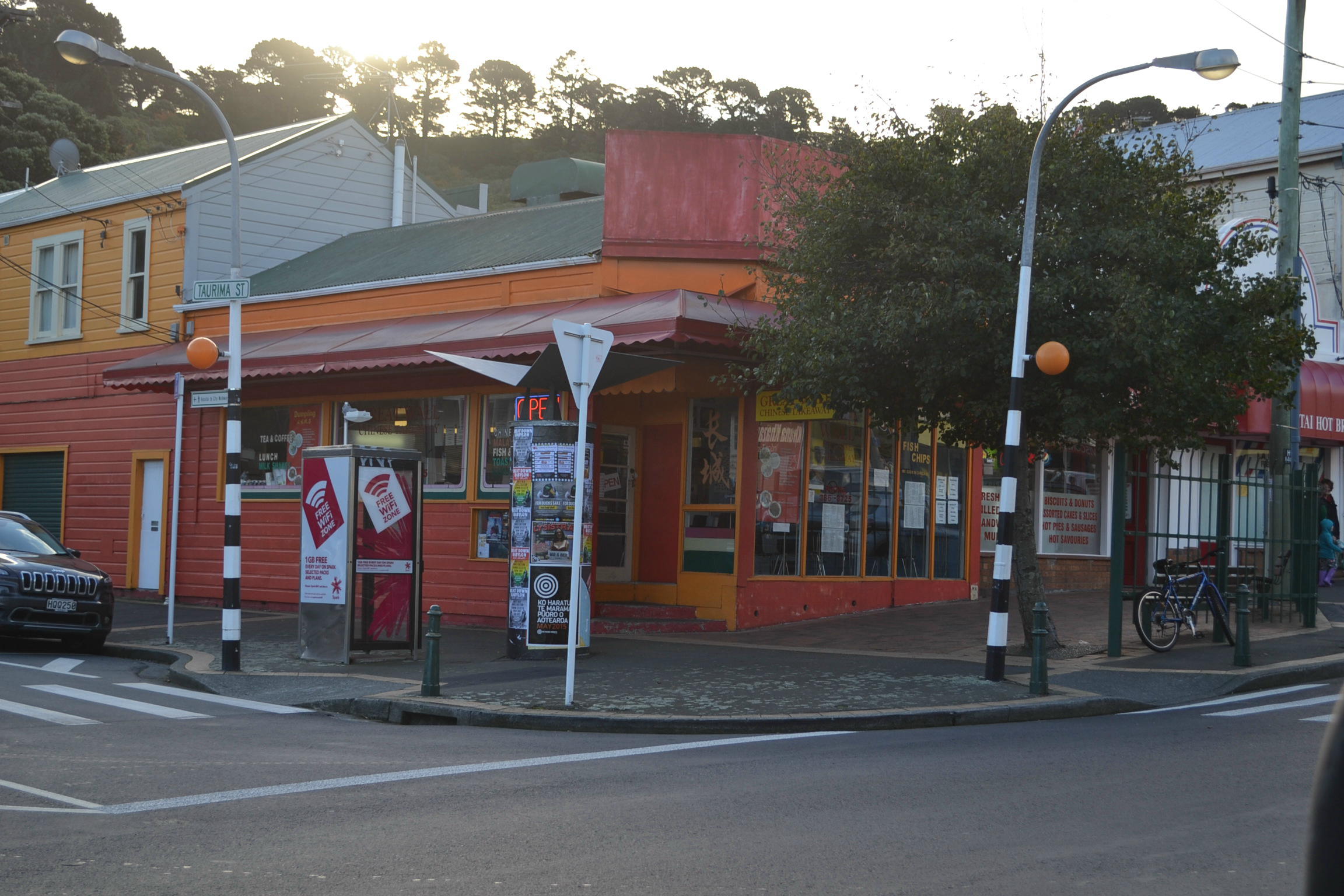
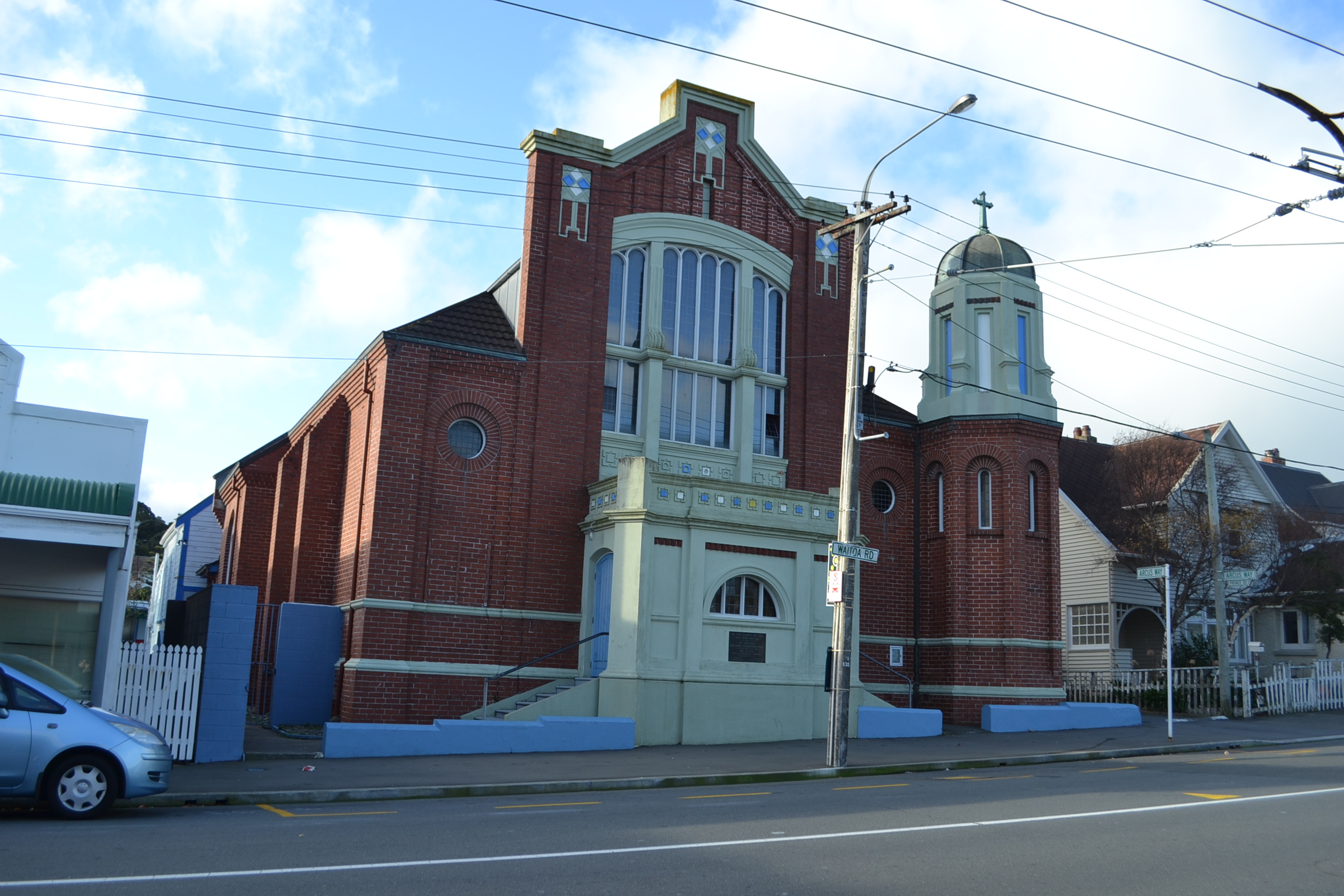
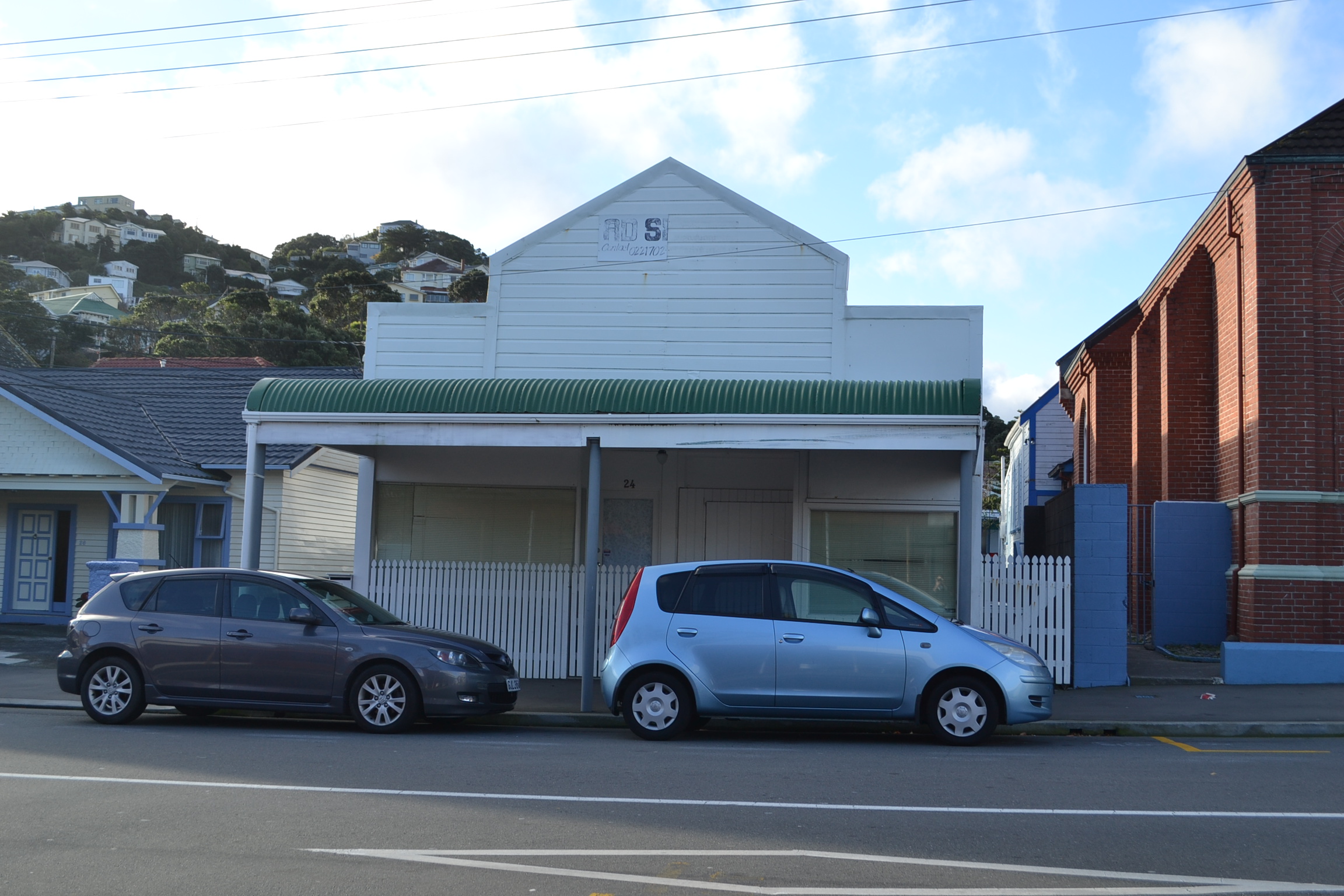
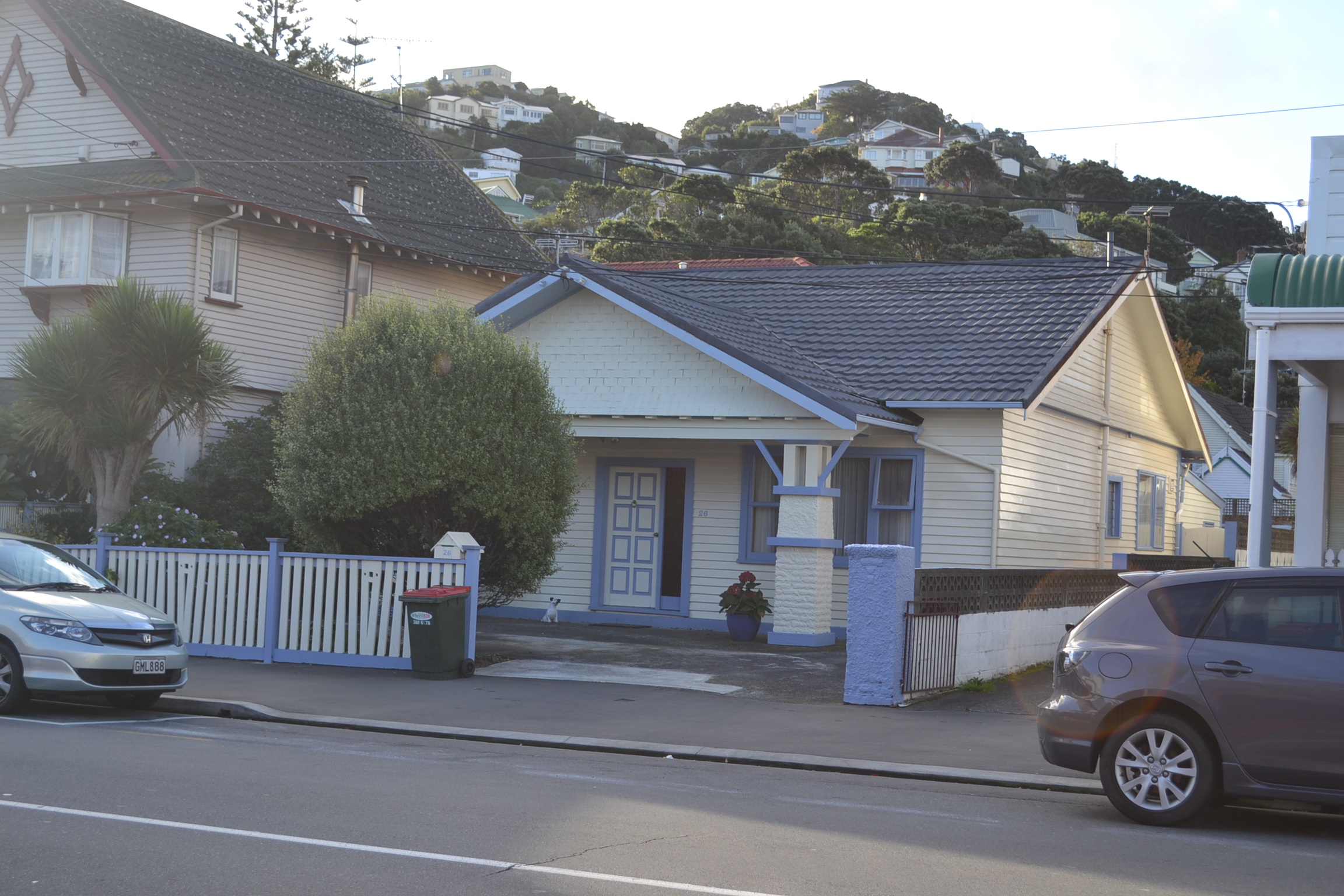
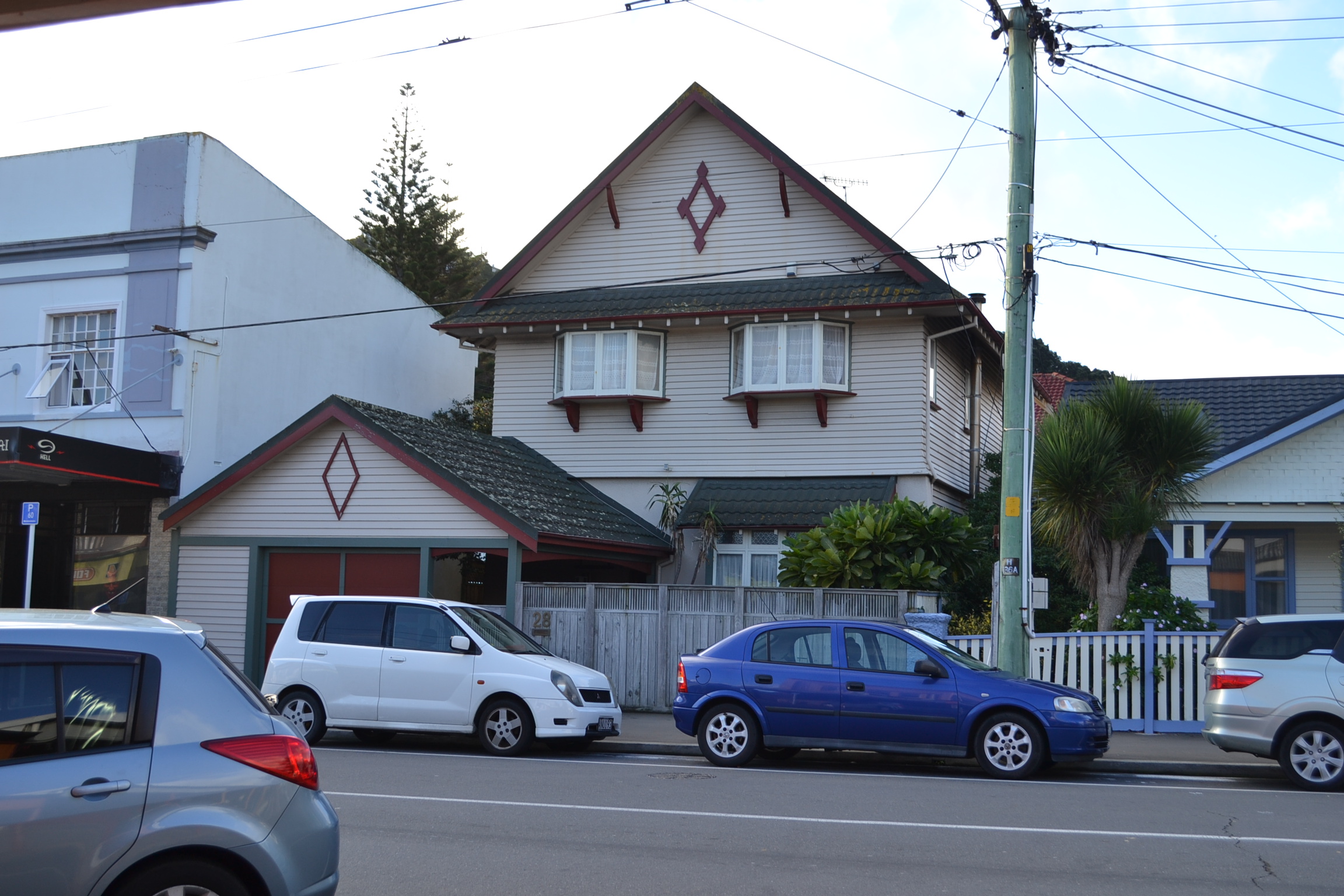
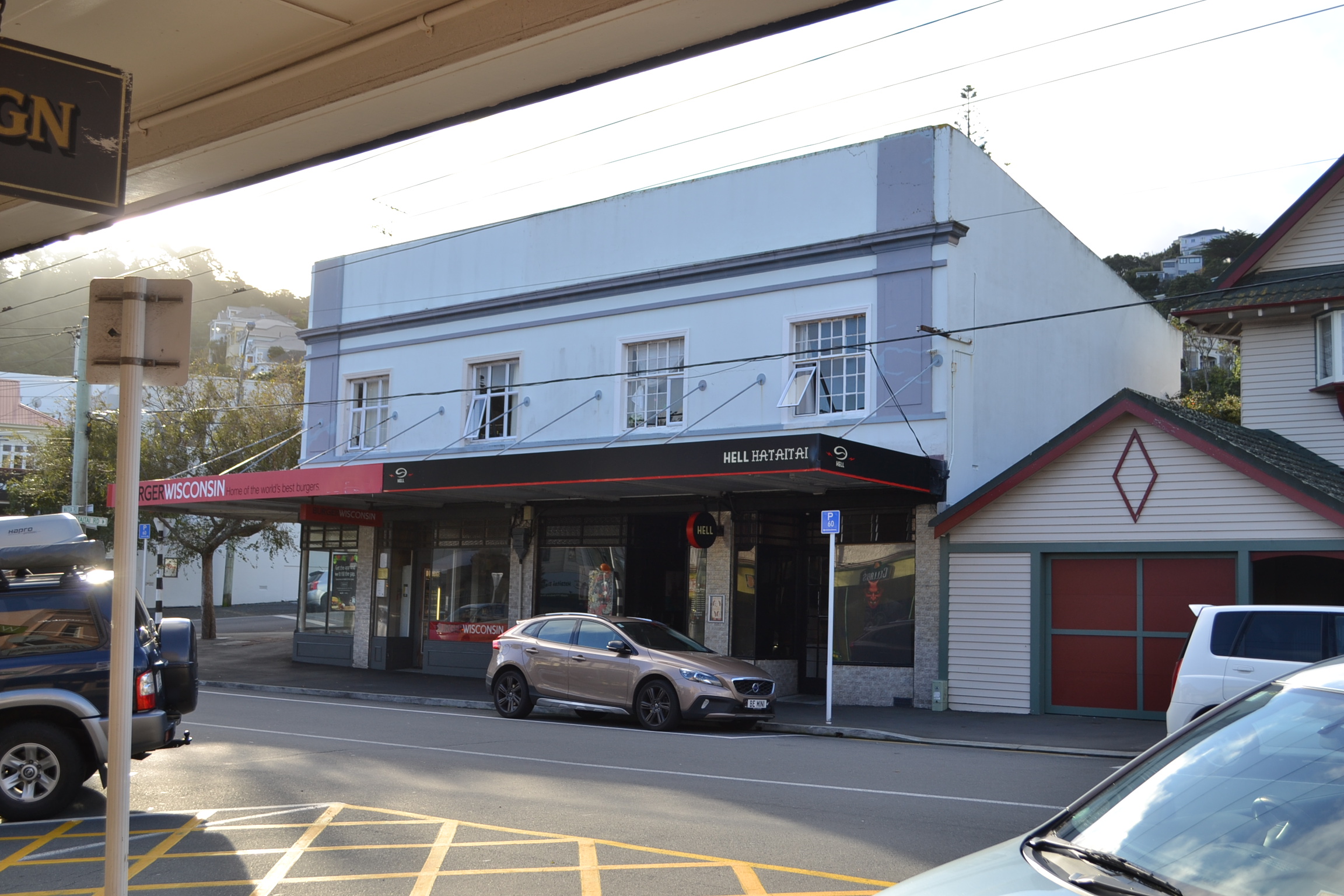
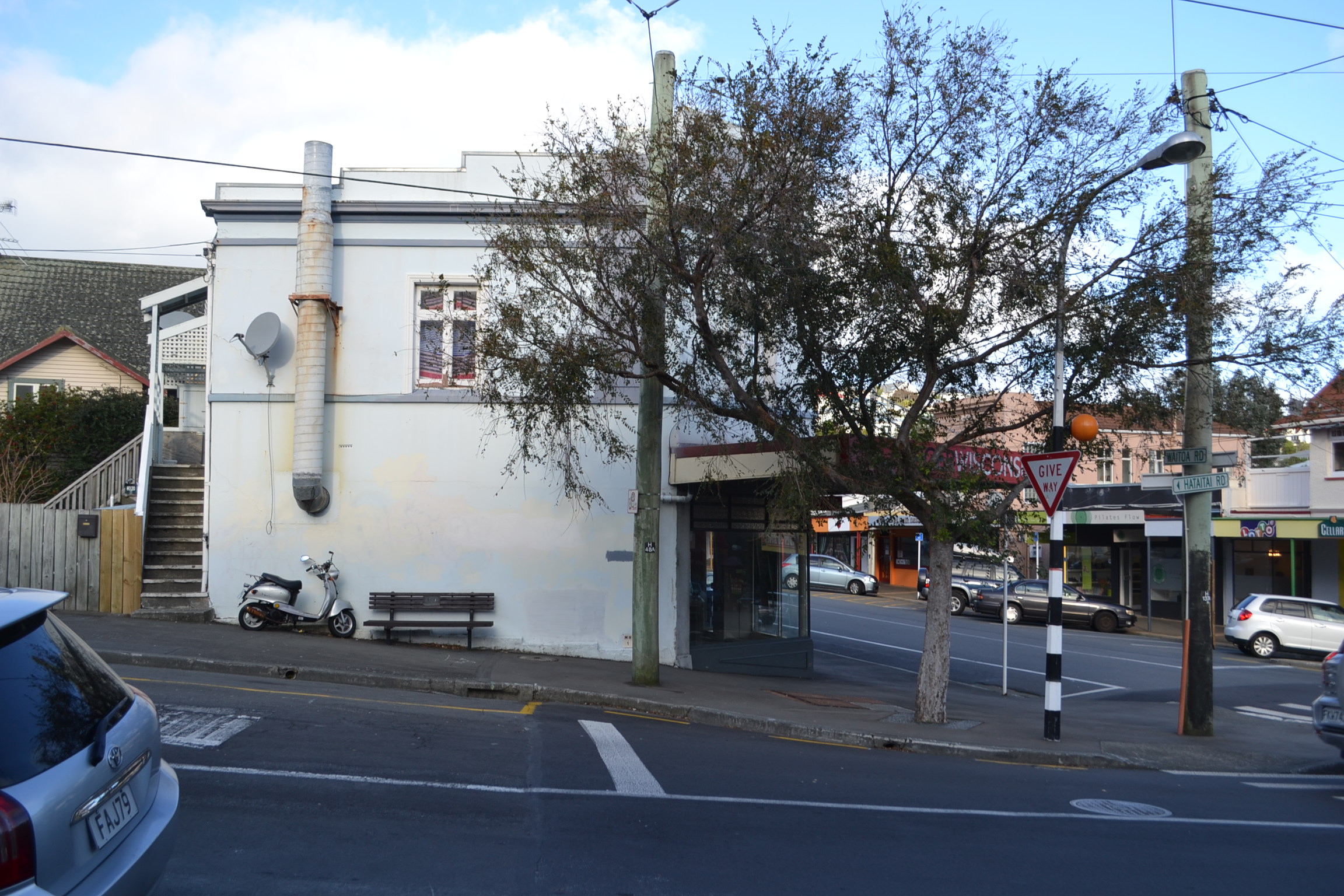
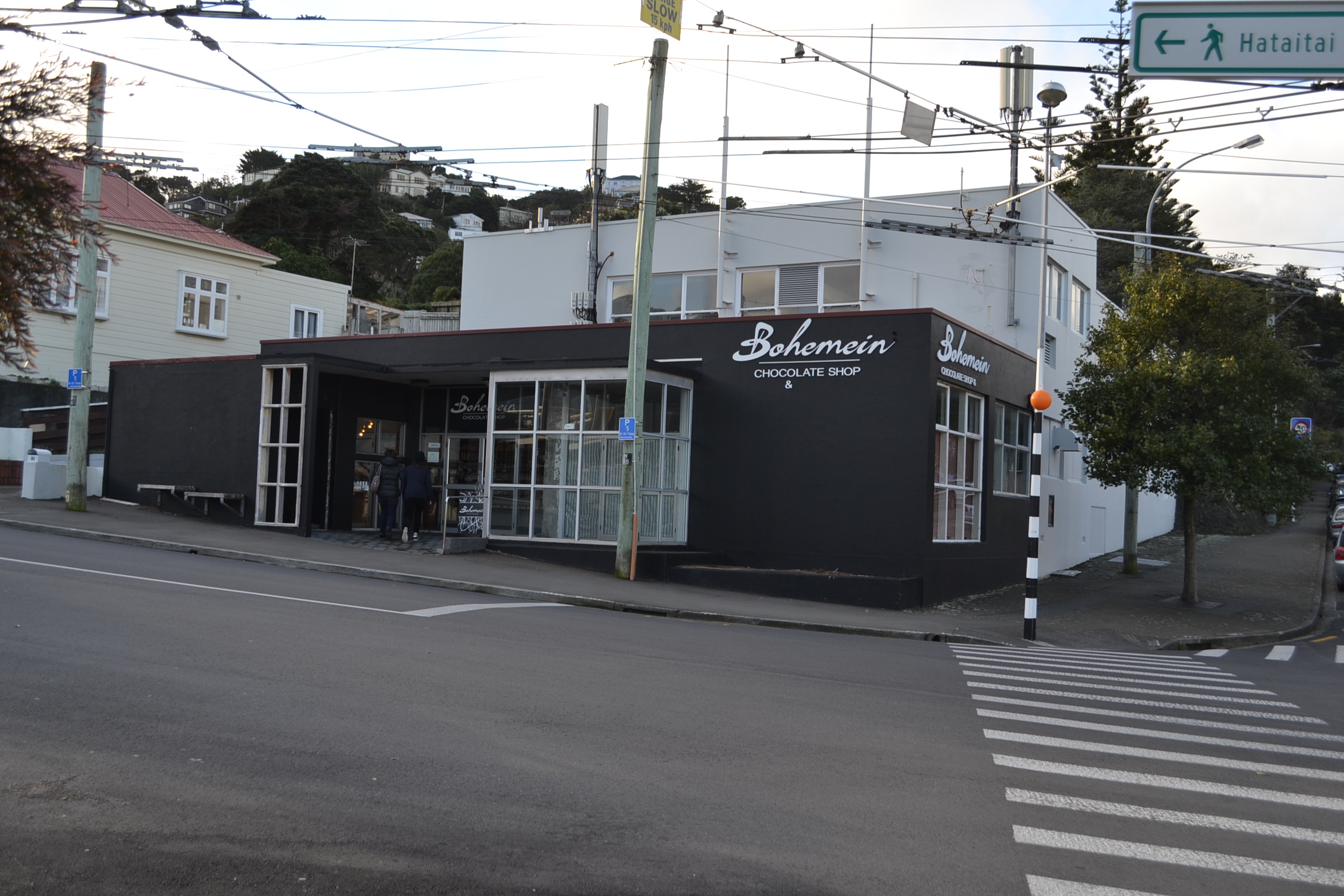
32 - 34 Waitoa Road. Image: WCC, 2015
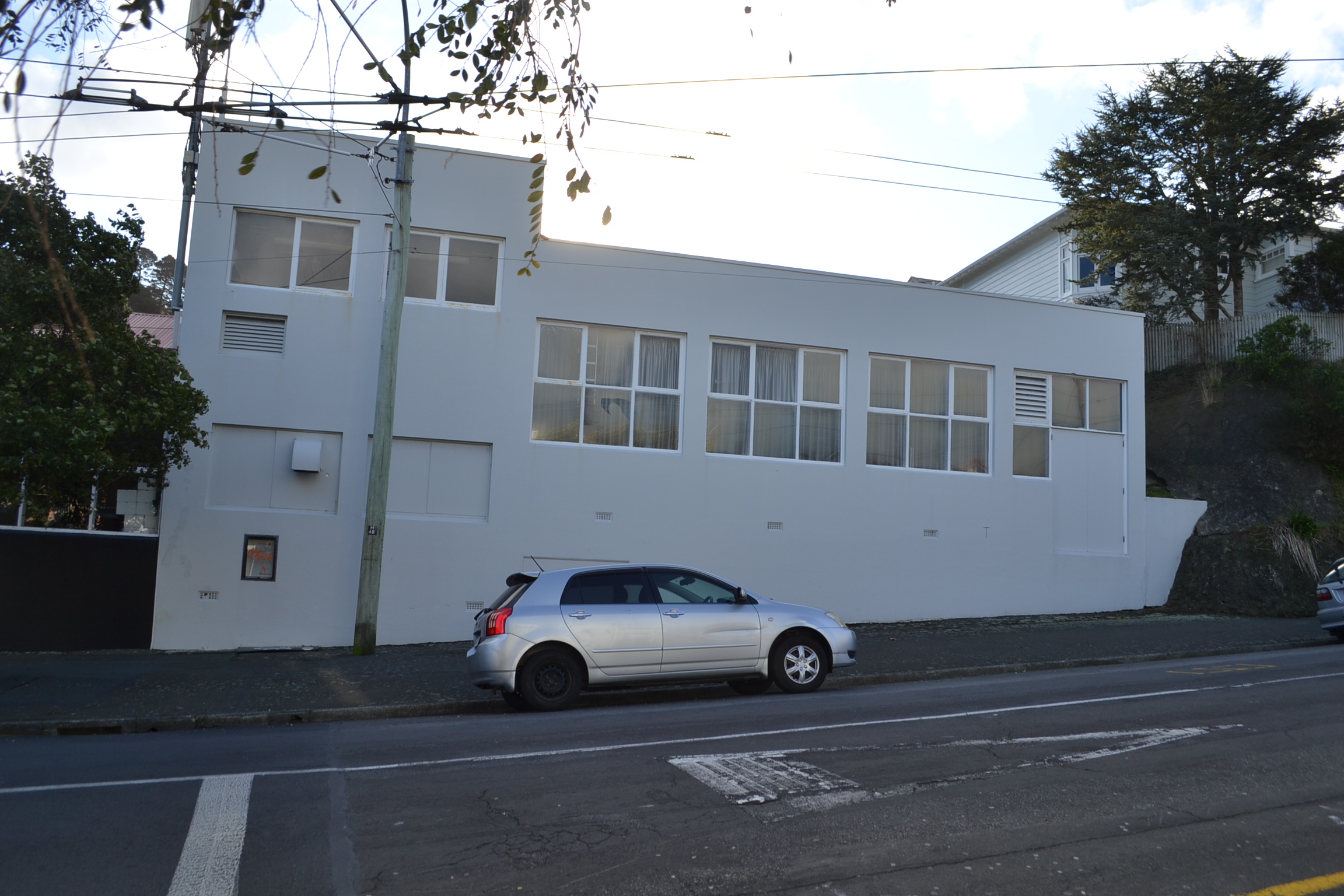
32 - 34 Waitoa Road. Image: WCC, 2015
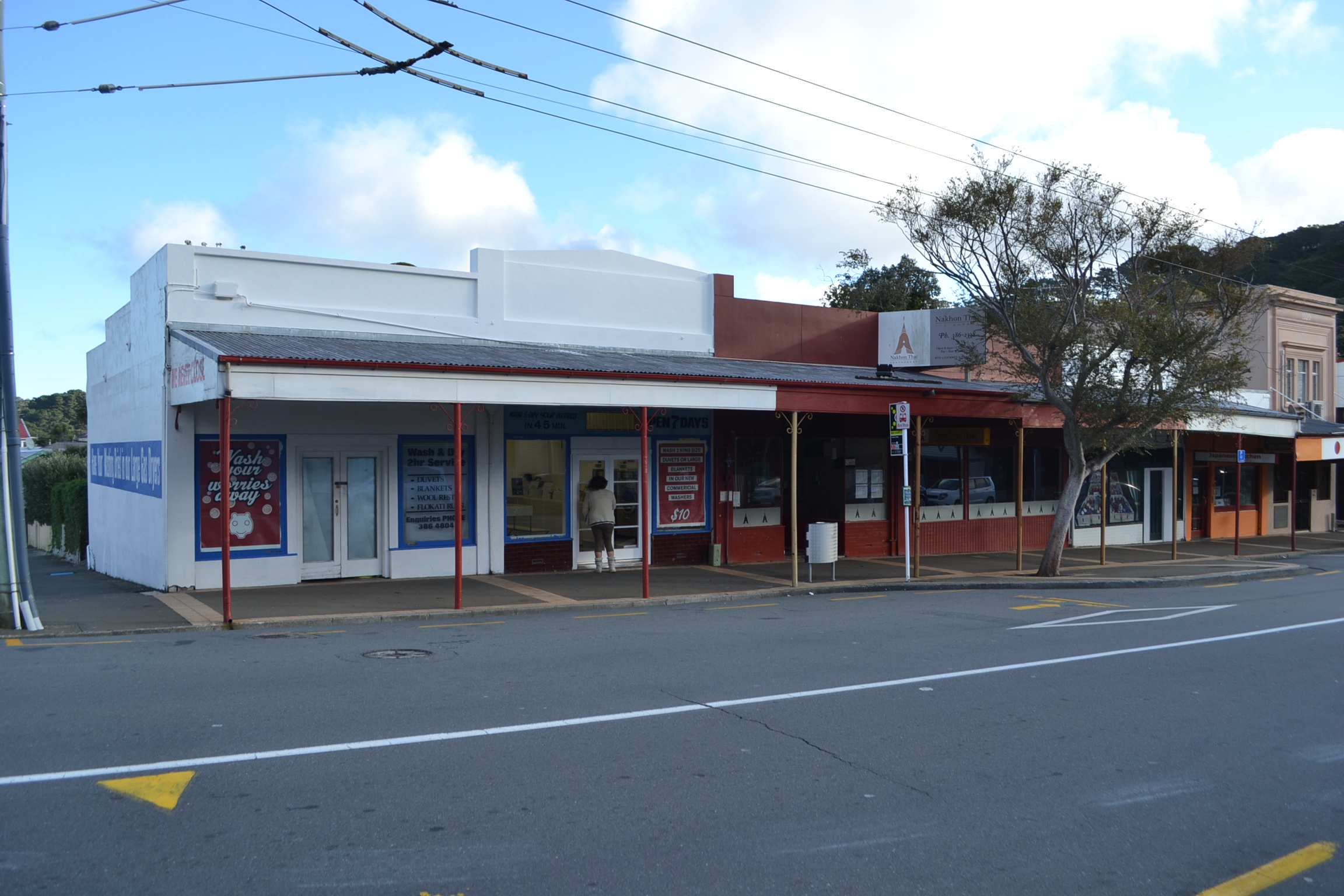
23 - 25 Waitoa Road. Image: WCC, 2015
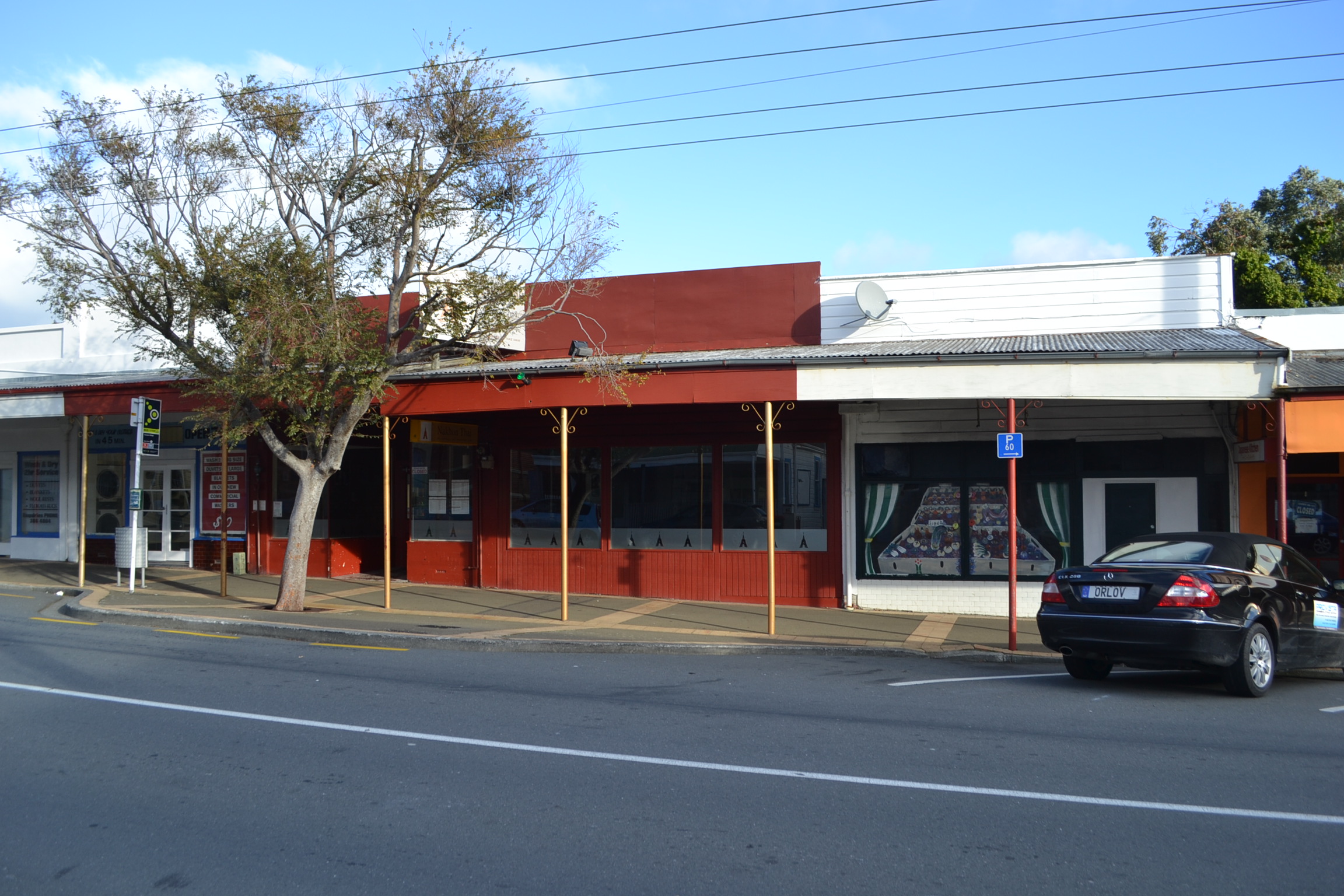
23 - 25 Waitoa Road. Image: WCC, 2015
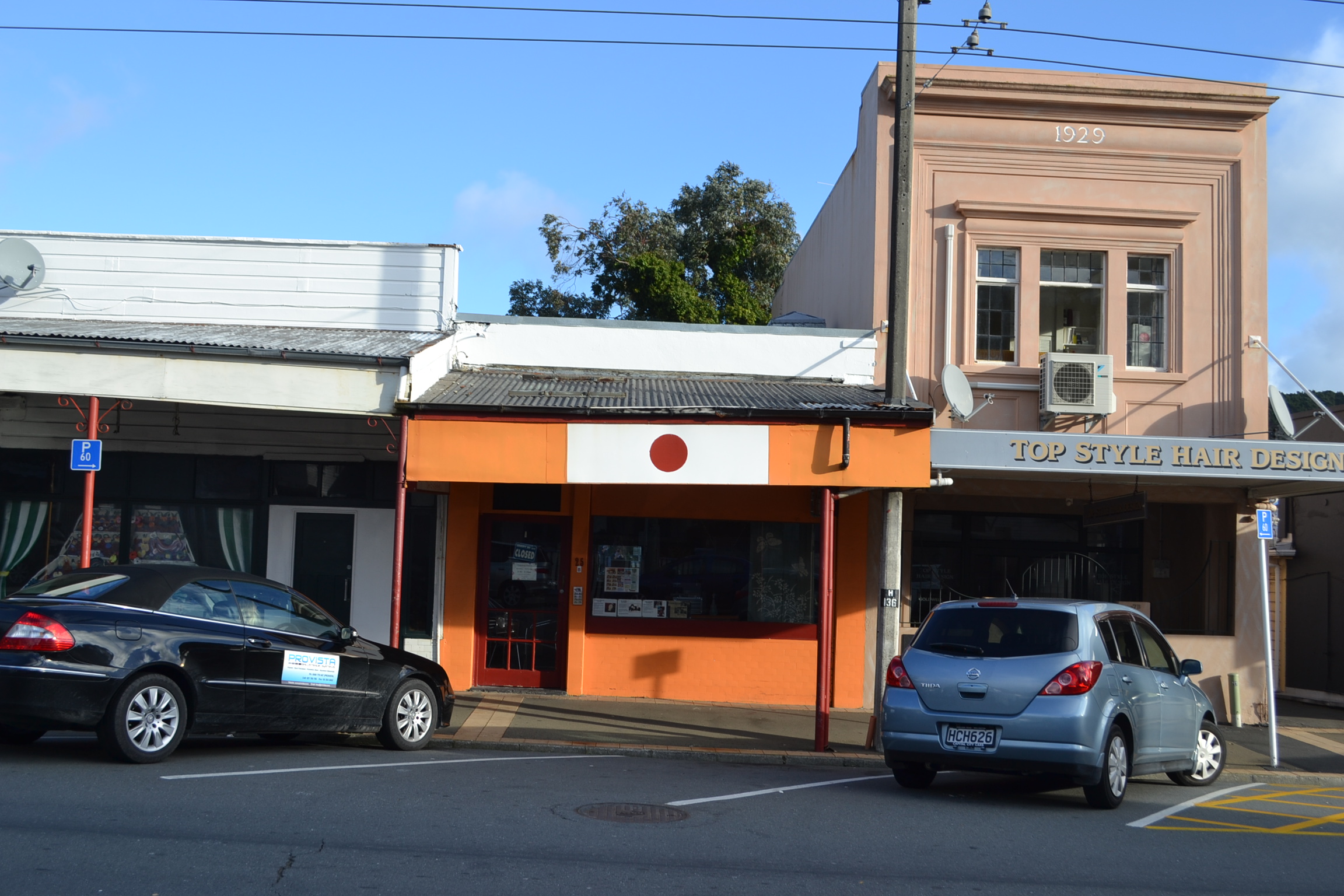
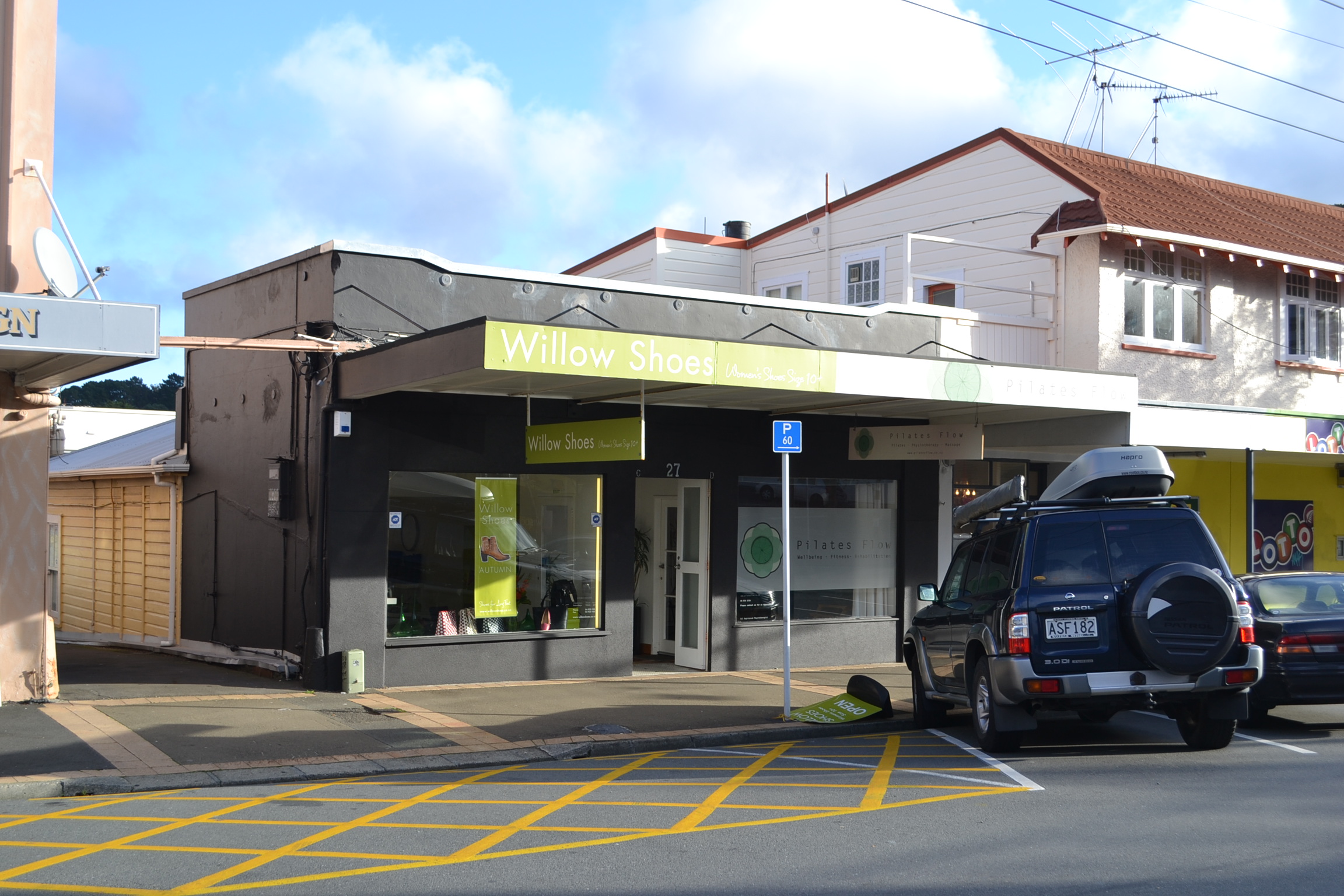
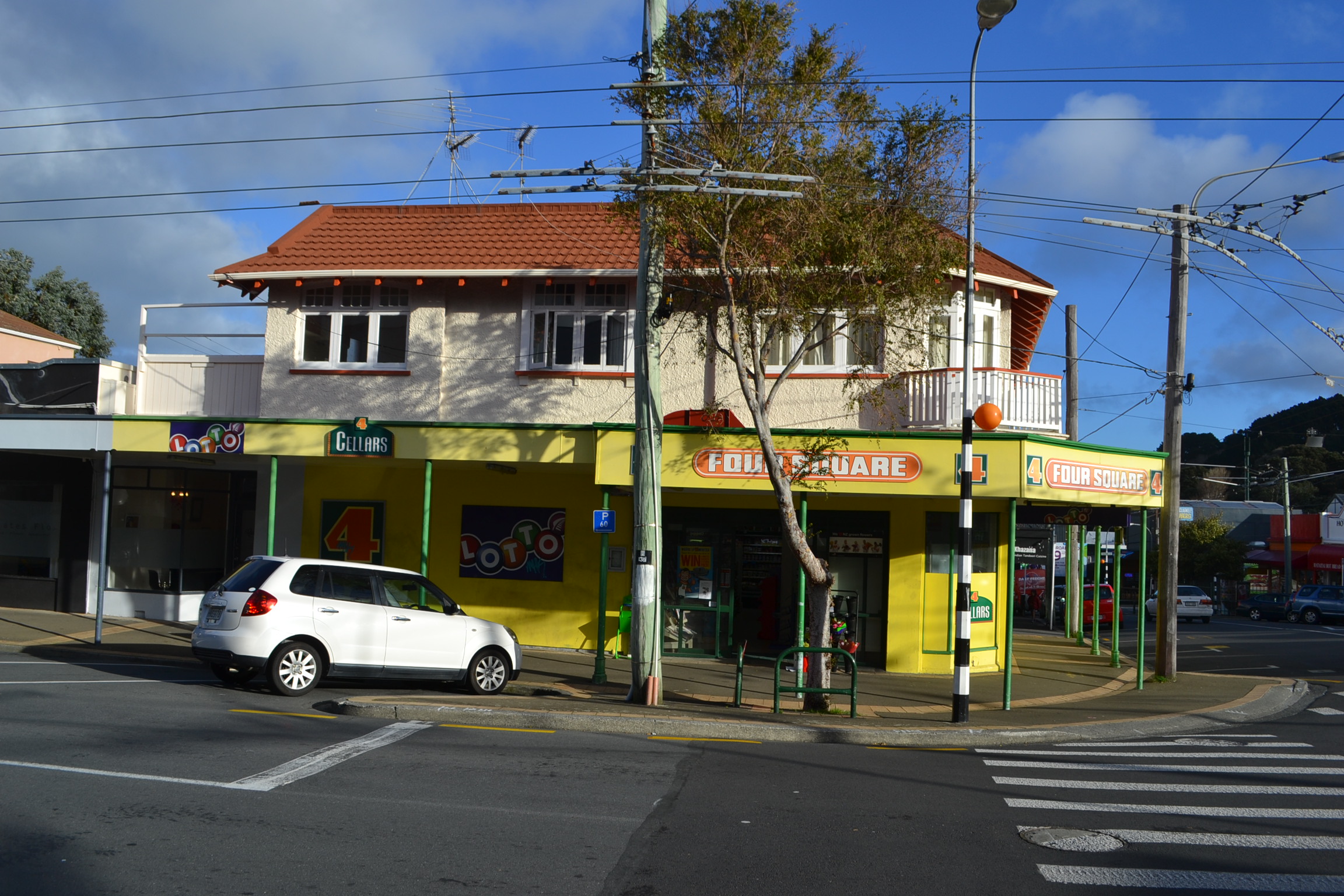
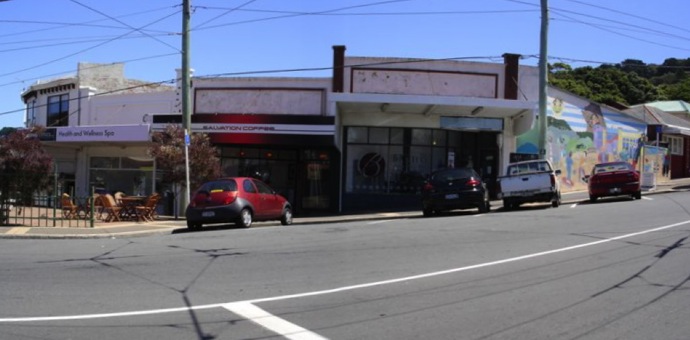
-
The Hataitai Shopping Centre Heritage Area is situated on the eastern side of Mount Victoria, on a gently sloping area around the intersection of Moxham Avenue and Waitoa Road. The heritage area has a good collection of buildings from the 1910s and 1920s, including many buildings of local heritage significance, that illustrate the growth of the suburb from the late 19th century to the present day. The heritage area reflects the character of the surrounding residential area and today stands as a good representative example of an inter-war commercial centre.
Hataitai’s first occupants were farmers but by the end of the 19th century there was a scattering of residences, mainly along a primitive Moxham Avenue. A handful of shops appeared in the early 20th century, two of which survive at 6-8 and 10 Moxham Avenue. The suburb’s growth was initially constrained by the obstacle of Mt Victoria and the attendant difficulties in getting to and from town. Real impetus to growth, and the development of the commercial area at the nexus of Waitoa Road and Moxham Avenue, came with the opening of the Hataitai Tramway Tunnel at the top of Waitoa Road in 1907. In the decades that followed Hataitai grew quickly and the heritage area, and much of the surrounding suburb that now exists, was largely established by the 1930s. Today Hataitai is an affluent, well-established area, close to the city, with a vibrant shopping centre.
The heritage area’s first buildings were occupied by an assortment of grocery stores, bakeries, fruit shops, drapers, stationers and confectioners, uses entirely typical for the time. Some of the early types of business still survive in the area, a handful of those in their original buildings, and the majority of the buildings are still used for commercial purposes.
The characteristic eras of development illustrated by the heritage area buildings are the 1910s and 1920s, the former demonstrating the impetus given by the tram line to suburban growth and the latter reflecting the rapid development of the suburb after World War I. The heritage area features some interesting buildings; two of particular significance were built in the 1920s; the Realm Ballroom in Moxham Avenue, and, just around the corner, the Hataitai Methodist Church at 22 Waitoa Road.
The area has a consistent historic streetscape that is rare in Wellington, particularly so close to the city centre. The variety in age and type of the buildings, the strong historic and visual contribution of those buildings, and the collective value of the buildings makes the Hataitai shopping centre an important heritage area.
-
close
Physical Description
-
Setting
close
Hataitai is a residential suburb characterised in large part by its challenging topography and paucity of flat land. The greater part of the area is confined by the hills of Roseneath, Mount Victoria and the Town Belt to the north and west, and by the hills overlooking Evans Bay to the east. The valley between these two major sets of hills falls to the south and the very southern tail of the suburb runs out to flat land to meet in to Kilbirnie.
The heritage area is located roughly in the cartographical centre of the suburb. It is set within a gently sloping bowl that rises to the east, north and west from the Waitoa Road intersection and falls slowly to the south.
The areas surrounding the heritage area have a remarkably consistent visual quality. The most significant period of development for Hataitai was the late 1910s through to the 1930s and the majority of the buildings that can be seen, predominantly one and two-storey houses, date from this era. The hilly setting emphasises how closely packed the suburb is, but at the same time creates a generous sense of open space around many of the buildings. There are also a number of schools and community facilities in close proximity to the commercial area. Together with the numerous mature trees and close proximity of the Town Belt, the collection of buildings creates a strong impression of established and historic character throughout the suburb.
-
Streetscape or Landscape
close
Waitoa Road, originating at the tram tunnel, is a broad street that slopes gently down to the south-east at a gradient to suit the early trams; this width is continued along Moxham Avenue, setting the heritage area about a wide intersection and imparting a generous sense of space to the area. The heritage area has a sunny and open northerly aspect.
The heritage area buildings are relatively uniform in scale, not more than two storeys high, and collectively have a consistent and distinctive 1920s and 30s character. With few exceptions, the buildings are set hard to the street, creating a strong street wall line, are built closely together, and are finished with verandahs, giving a strong overall harmony of form and scale. This creates a distinctive and visually authentic inter-war streetscape that strongly reflects the character of the suburb as a whole, and that adds to the heritage values of the suburb.
-
Contents and Extent
close
Not available
-
Buildings
close
Waitoa Street
22 Waitoa Road (Hataitai Methodist church)
Methodism first made an appearance in Hataitai in 1886 with services given in private homes and later at the school in Moxham Avenue. In 1895 the Methodist community bought land next to the school and the construction of the first church, a small timber building seating 100, began. The church was opened on 21 October 1896. In 1908 a more centrally-located site was bought on Waitoa Road, presumably with the intent of building a larger church, and in 1913 the timber church building was moved to this site.
As the congregation grew, keeping pace with the suburb’s rapid development, the first church’s limited capacity soon became a problem. Fundraising began in earnest but it took some years before construction could begin on a larger building. The foundation stone of the new church was eventually laid on 30th June 1928 by Governor General Sir Charles Fergusson.
The new church was designed by the well-known architect, and local resident, William Fielding, and cost £5,300 including furnishings. The old wooden church at the rear of the site continued to be used for Sunday school and as a hall. In 1946 a booklet printed for the church’s Jubilee celebrations noted ‘…present-day Hataitai is a model suburb with many beautiful homes and a fine community spirit’. During 1971 the Samoan Methodist Church was granted use of the church and hall on Sunday afternoons. Then in 1977 both buildings were sold to the Samoan church for $62,000. Hataitai Methodist Church joined with the Anglican All Saints in Moxham Avenue to form the Hataitai-Kilbirnie Co-operating Parish.
The church is very prominent in the streetscape and is notable in the heritage area for its distinctive materials, architecture and scale. Set back slightly from the street, by the depth of the entry porch, the church is a substantial and imposing structure executed in contrasting red brick and white-painted plaster.
Although simply arranged and spare and restrained in its ornament, the building is very carefully considered and detailed – the brickwork is laid in many different planes, creating a rich play of shadows and the structure is further enriched by the judicious use of plaster mouldings and relief work that further contrasts with the brick, all of which gives a strong architectural character and creates a high level of visual interest.
The style of the building is difficult to categorise. Fielding’s design illustrates many of the characteristics of the Stripped Classical style that became prevalent in public buildings in through the inter-war period, but has a strong Romanesque influence married with cues from contemporary northern European church buildings.
The main elevation has a powerful and striking central symmetry – its key architectural features include the massive segmental-arched nave window above the solid-plastered entry porch, the high steeped parapet masking the roof beyond, the circular windows to the aisles beyond, the porch itself, with doors and steps placed symmetrically on either side – all neatly counterbalanced by the carefully-scaled octagonal bell tower placed on the right corner.
The side elevations are treated more simply than the street elevation – the main features aside from a few windows are buttresses and a prominent eave in stepped brick. The north elevation takes the form of a blind gable end wall, with two projecting buttresses; the roof line steps down to the altar end of the building. The balance of the north wall is largely masked by the hall (and former old church). This is a large single-storey timber building covered with two main gable roofs, connected to the church with a modern lean-to roof.
Belying the impression created by its imposing street frontage, the church is actually a comparatively small building, only slightly more than longer in plan than it is wide. Although the church is understood to be complete as originally intended, it looks rather like a completed nave, awaiting transepts and a chancel to be built on the north end.
24 Waitoa Road
The building permit was issued for this building in 1912. The owner was J.A. Martin, a coal merchant, and the builder W.B. Hutchings. There is some suggestion that it was built in 1916 for Nelson Young, who bought the property two years earlier from the Hataitai Land Co. If the building was completed in 1912, the property was still in the hands of the Company. Martin (or rather his wife Eleanor) was the owner by 1916 and there is little reason to think that they were not the original owners of the building. Eleanor Martin remained the owner until her death in 1953, and the property was sold to a private buyer.
The building is comprised of two shops, one of which (24a) has been a fruiterers or greengrocers for much of its history. During the 1920s the Hwong family operated a laundry in one shop and a fruiterers in the other. Nelson Young occupied the building as a greengrocer in the late 1960s. It is presently unoccupied.
There are two distinct buildings on this property – the two shops at the street front and a house at the back. The shops are contained in a simple single-storey timber building in a plain Edwardian commercial style, clad in rusticated weatherboards and covered with a modern Decramastic tile roof. The two shops are symmetrical about the centreline, with entrances either side of the centre recessed back from the shopfronts. A shallow bullnosed verandah shelters the shopfronts and is supported on steel posts. Above this, a simple stepped parapet with a gabled central section conceals the roof beyond.
26 Waitoa Road
This house was designed by William Fielding for William Boyd, a storekeeper and the permit issued in 1918. The builder was S. Harris. It has been a domestic residence since its construction.
Boyd built the house as part of a speculative venture, which was originally intended to include four other houses on adjoining lots. He sold this house almost immediately and it changed hands regularly over the next decade. The house was bought by George Miles, a butcher, in 1930 but he did not occupy it.
The house is a small single storey Californian bungalow, designed in a typical style of the day, one that became a prevalent building style in Hataitai. While there is little in the outward appearance to illustrate the hand of Fielding, the building has been carefully designed and proportioned. Symmetrically composed with a rectangular plan, the street elevation of the house has a large open gabled porch facing the street on the centreline – the porch roof is supported on short timber columns atop roughcast masonry piers – casement windows and bevel-back weatherboard cladding; the shallow-pitched gabled roof roof is clad in modern Decramastic tiles, and the gable end in shingles. There is a small lean-to at the rear.
28 Waitoa Road
As with 26 Waitoa Road this house was designed by William Fielding for William Boyd, a storekeeper, and the permit issued in 1918. The builder was S. Harris. Boyd built the house as part of a speculative venture, which was intended to include four other houses on adjoining lots.
The house was sold almost immediately to schoolmaster Charles Bary and his wife Margaret. Following Charles Bary's death in 1935, two of Margaret Bary's relatives (Doris Calder and Thelma Bary) joined her as tenants-in-common. Upon Margaret Bary's death in 1939, the house was inherited by the others. Although the history of the property ownership is somewhat convoluted, it appears to have remained in the same extended family ever since.
This house is more outwardly substantial than 26 and has a much more severe and conservative late Edwardian style that gives it a strong presence in the streetscape. Although its plan area is compact, and in fact smaller than 26, it is a tall two storeys with a prominent high gabled roof and an interesting pair of bracketed oriel windows at the first floor. The house is set back a short distance from the street; a modern garage is dominant in the front yard.
30 Waitoa Road
The prominent corner site now occupied by Waitoa Buildings was initially intended to have a house built on it, and like those to its immediate east, it was to have been designed by William Fielding for William Boyd.
However, the house was never built and instead the land was acquired by the WCC. The purpose of this acquisition is not known but it may have been for roading purposes; in 1924 the land was sold to William Nesbitt, a taxi proprietor, who in 1927 sold some of the land to the council for ‘the purposes of building a road’. Just which road this refers to is not known as both Waitoa Road and Hataitai Road were formed by this time. The CT refers to the corner itself so it may have been an issue over that part of the site. Nesbitt gave the council more land in February 1928 for road widening and then embarked on constructing Waitoa Buildings. No architect is listed with the permit but the builder was R O’Brien.
Nesbitt sold the property to Konini Buildings Ltd in 1936. This company retained ownership until 1971. That year it was sold to private owners.
Since construction, the building has had numerous uses in its three shops and many different tenants in its upstairs flats. However, all three shops had at least one long-term occupant. For 30a it was a stationers and book shop, 30b was a general store and 30c was a confectioners, later ‘sweet shop’. Other uses of note include a bank, hardware store, and shoe repairers. Burger Wisconsin is a high-profile current tenant.
One of the characteristic buildings of the Hataitai commercial area, due partly to its prominent corer location and partly to its design, Waitoa Buildings is a handsome structure that reflects Hataitai’s key period of growth in the inter-war period. It is two storeys high in masonry construction; the tall parapet conceals a shallow flat roof beyond (and a party wall dividing the building roughly 1/3 to 2/3rds). The building has a formal but quite unusual style, a half-blend of a simple stripped Classical form mixed with subtle motifs of early Moderne details. It makes an excellent use of its corner site; the bevelled corner and entrance and the shopfronts and verandah stepping back around the corner up Waitoa Road both take advantage of the location and topography.
The shop fronts still have original glazed tile columns and spandrels and some original timber joinery; the verandah is a simple horizontal construction with prominent stays. Above the verandah, the windows are relieved into the masonry wall – the joinery is a mixture of modern aluminium and original thin and elegant steel. The façade is enlivened with broad but shallow “pilasters” at each corner of the main façade and trimmed with a dado running along at window sill height and a large but shallow moulded cornice dividing the parapet from the upper walls.
32-34 Waitoa Road (Hataitai Telephone Exchange and Post Office)
Hataitai’s first Post Office may have occupied the building that was previously located on this site at the north-west corner of Hataitai and Waitoa Roads. The previous building had a variety of purposes, including a drapery. The Post Office certainly spent some time in rented premises in front of The Realm Ballroom at 7 Moxham Avenue. After World War II, growing demand for telecommunications services in particular, along with the general growth of the eastern suburbs generated sufficient pressure for a new bespoke building.
The new building was constructed in 1950-51 to a design by the Ministry of Works and included a modern telephone exchange.
It remained in use by the Post Office until 1988, when, following the extensive deregulation and state asset sales of the 1980s, and the splitting of the Post Office in to its component functions, the building was made redundant and was sold into private hands. It was immediately turned to commercial use and has been occupied by Loder Interiors since 1998.
The building is a simple, plain and four-square late 1940s-style Modernist structure and is an interesting example of some of the post-war Modern architectural work being carried out within the Ministry of Works at the time.
Rectilinear in plan, section, and elevation and built in reinforced concrete with a smooth plaster render, it has three main volumes – a single-storey element fronting Waitoa Road, originally housing the public areas of the post office, a high double-storey section in the middle, presumably housing the original automatic telephone exchange, and a lower two-storey element at the back. Windows in the front section are in early aluminium but are timber in the other parts of the building; the windows have regular geometric proportions, are symmetrically arranged and are recessed in to each façade. A flat roof is concealed behind low parapets. The Waitoa Road elevation of the exchange block has four quite distinctive antenna mounts spaced evenly along the top of the façade, which are an interesting architectural feature.
23 Waitoa Road
This row of shops – originally six in all – was constructed for leather manufacturer Bernard Osborne in two stages from 1922. It was the subject of two permits – one a year after the other. The second permit is marked by a nearly 100% jump in the value of the application, but the reason for this is not known. The builder listed on first permit was Cudley and Barrbrown, while that on the second was B A Robertson. There is some suggestion from prior CTs that other buildings were on the site prior to the present one as land was purchased from the Hataitai Land Co. in 1905 and various mortgages taken out by the prior owners. However, construction of the building came only after subdivision of the land, a square, two-lot section on the corner of Waitoa Road and William Street, to form the present legal boundaries in 1923. Lot 1 of the new subdivision was utilised for the new shops. Curiously, land records show that the owner of the property in 1922 was John Symonds, a butcher, and that he did not sell the property to Osborne until 1924.
Osborne kept the building until his death in 1953. He leased the shops to a variety of businesses. During the Depression, the stores were occupied by, among other things, a butcher, draper and confectioner. By 1971, a bootmaker, cake shop and a dairy were occupants. In more recent years, restaurants and cafés and a laundrette have been long-standing occupants. Two shops have been amalgamated into one space. There has been a laundrette in the building since the mid-1970s. The present owners bought the building in 1994.
23 Waitoa Road today is arranged as two groups of three shop-fronts, although some shops are amalgamated as noted above. The overall form of this terrace of single-storey shops clearly reflects the two distinct phases of construction. The group of three shops on the left is composed symmetrically about the centre, reflected in the simple triangular pediment atop the central part of the parapet over the middle shop and the central location of doors and shop windows within each of the three shop fronts.
Individual flat roofs are concealed behind the parapet. The middle two shops, fused into one tenancy, have weatherboard cladding between the verandah and the display windows (and to the parapet, hidden behind sheet metal on the restaurant), and this cladding also extends to the right-most shop.
The latter is the odd shop out of the group – it has a different parapet and verandah line from the other five which may suggest it was either built at a different time, or simply modified without regard to the other shops; it nevertheless remains in keeping with the general form and scale of the rest of the terrace and adds visual interest. The two right-hand shops, although modified over time, still retain original glazed tile spandrel panels under the shop windows and the two left-hand shops (laundrette) appear to have some original shopfront material.
25-27 Waitoa Road
This is a property containing two separate buildings, both of which were built for William Young, a salesman. Young bought the property in 1922 when it was occupied by at least one house, probably constructed in 1905 when the land was purchased for the Hataitai Land Co. The present building at 25 was built first, although there is some confusion over exactly when; the permit was issued in 1926, but the date of 1929 is shown in relief on the building’s street façade. The architect is not known but the builder was H Watt. No. 27 was constructed as a shopfront addition (to the house) by Fields and Co. in 1929. Young kept the property (and the buildings) it remained in ownership by the Young family until 1983.
The street numbering of these buildings (and of the adjacent buildings) is quite confusing. No. 25 was constructed as a two-storey shop and apartment (currently numbered 27 and 27b), while 27 was a single storey two-shop addition to the front of an existing house (these shops are currently numbered as 27c and 27d).
From the 1920s the two buildings were often, but not always and not consistently, numbered 25 (and 25a) and variations on 27. No. 25 was, for a lengthy period, a fruiterers and laundry, run by Wah Ngan, and then a butchers (although confusingly they are shown in street directories to have been in the building at these same time).
No. 27 housed a Self Help Store, then later a drycleaners, cake shop and a laundrette. Permit records indicate that changes were made to the shops of 27 during the 1990s. Today, 25 is occupied by Top Style Hair Design (numbered as 27b), and 27 is occupied by Willow Shoes (27c) and Zintas (27d).
No. 25 is an elegant late 1920s building in a simple Stripped Classical idiom in two-storey masonry construction, capped with a hipped Marseille tile roof concealed behind parapets on three sides. The building has a distinctive vertical proportion. While the lower façade beneath the stayed horizontal veranda has been “modernised”, the upper façade remains as originally built. This is symmetrically composed in a quite quirky fashion as a large-scale picture frame. Central in the façade is a three-bay double-hung window assembly, trimmed with moulded facings and a heavy moulded horizontal entablature. Stepping out from this, a larger and heavier version of the same detail is used against a blind wall to frame the windows, all to interesting architectural effect.
No. 27 is on the same title as 25 and has similar origins but could hardly be more visibly different. The driveway to the rear of the property allows views of the east side of the building.
This shows that the two shops, built with a common monolithic frontage, are quite shallow in plan and are directly appended to the street front of an old villa, where a verandah, or small front yard, would once have fitted. The shops have a harmony of scale and elevation line with the other shops on this side of the street, enhanced by the prominent stayed verandah. There is a large garage/workshop at the rear of the property. The present use of the house is unknown.
31-33 Waitoa Road
Constructed in 1919-20 for Frank Wander and John Roberts by contractors Davison and Roberts, this single-storey terraced building occupies the bend of the Moxham Avenue/Waitoa Road corner. The building clearly post-dates the arrival of the tram because the sweeping curve of the corner was designed to suit the tram and the building is shaped accordingly. There were (and are) three retail spaces in all, which Wander and Roberts leased out. They remained the joint owners until Wander sold his share to his partner in 1946. The buildings have remained in private ownership ever since.
The early uses of this building are only intermittently known. Street directories listed the occupants of the buildings as part of Moxham Avenue, despite not attributing numbers to the shops. For instance, in 1940, two of the premises were occupied by a stationers/booksellers (a long standing occupant in various guises) and a confectioners. By 1950, grocers occupied one shop, and a similar sort of business survived until at least the early 1970s. The turnover of shops has been regular but recent occupants have included a café, beauty parlour and hairdressers. Again, the street numbers are confusing, with two of the shops numbered 31 and one 33.
31 – 33 Waitoa Road is a terrace of small single-storey Edwardian-style shops, all long and narrow in plan and oriented perpendicular to Moxham Avenue. Considerable visual and architectural interest is added by the shop-fronts following the curve around into Waitoa Road, and stepping up the hill as they come around. This presents the shops as three visually distinct but interconnected buildings. Each shop has a prominent horizontal parapet with a large recessed panel, projecting “horns” formed by the vertical extension of each party wall and a large horizontal stayed verandah that steps up with the rise in the street, and it is the rhythm of these simple forms that creates the building’s streetscape interest. The parapets conceal monoslope roofs – the southernmost two shops have lean-to’s at the rear.
The first shop in the group – highest in elevation and closest to the intersection – is 33. This is the most modified of the three and has a modern shop-front. The other two shops have a considerable amount of original shop-front material, including timber window and door joinery with distinctive slender profiles; the window joinery curves gracefully in to the recessed door position at the right side of each shop to add further visual, architectural and technical interest.
Moxham Avenue
1 Moxham Avenue
William Moorhouse acquired Lot 1 DP 1621, on the eastern corner of Waitoa Road and Moxham Avenue in October 1912, but by August that year he had already received a permit for a shop and dwelling on the site.
Designed by J T Mair (later Government Architect) and constructed by Meyer and Illingworth the two-storey building contained flats and shops, as it still does. Moorhouse sold Lot 1 in 1919 to William Boyd, who very quickly sold it to John Turnbull. Turnbull and his store became synonymous with the building. Turnbull’s was run by him and then his wife Annie until at least the 1960s, and remained in the Turnbull family’s ownership until 1972. The building has had the same owner since 1987. The present Four Square store is the successor to Turnbull's; this continuous use is matched by only a handful of other buildings in Hataitai. Other occupants over the life of the building have included a fishmonger’s, butchers and fruiterers.
This mixed-use building is set prominently on the street corner and is distinctive for its large size and forthright Edwardian domestic-style architecture. Constructed in rendered masonry it is, roughly, L-shaped in plan, with a large unequal-pitch gabled roof covered in Decramastic tiles (the back of the L is filled with building).
Nothing of the original shop frontages remains visible at the ground floor bar the form of the original corner bay (which is still a window and which is reflected at the first floor balcony above) – the two lower facades are now almost entirely blind and devoid of architectural feature. Despite this loss of detail, the building retains a strong presence on the street. Parts of the horizontal verandah are original, including some cast-iron posts, but this element is largely obscured by the present hoarding at the street edge.
The most visually interesting part of the building is the first floor above the verandah. This is balanced around the distinctive corner balcony and door assembly, with the two street facades made nearly identical and roughly symmetrical. The walls are covered in heavy rough-cast render, with intermittent pilasters adding depth and shadow lines to the wall; the joinery is classic Edwardian timber work in assemblies of multiple casement windows with multi-panel top lights, and with distinctive segmental-arched window heads to each assembly. The eaves are patterned with closely-spaced projecting rafter ends; this typically domestic detail adds further visual interest.
3 Moxham Avenue
Constructed in 1916, this was the second building erected on Lot 1 DP 1621 for William Moorhouse, following the construction of 1 Moxham Avenue four years earlier. This building was designed by John T Mair, later Government Architect and a figure of considerable importance in the history of 20th century New Zealand architecture. Mair designed a single storey terrace of three retail spaces. Three years later, Moorhouse sold the property, along with 1 Moxham Avenue, to William Boyd. Boyd immediately sold the property to storekeeper John Campbell and thereafter the ownership history is the same as No.1 Moxham Avenue.
Historically, it is difficult to assign users to specific spaces, which were divided into 3, 3a and 3b. Butchers were frequent occupants of 3. One long standing occupant of 3a was Poy Young, a fruiterer, from the 1930s to the 1980s. Prior to World War II, 3b seems to have been occupied by a fishmongers. After that, with the exception of a period as a bootmakers, the shop was occupied by the TAB.Today restaurants occupy two of the premises, while a herbal dispensary occupies the third shop.
In many ways similar to the terrace of shops on the opposite corner (31 – 33 Waitoa), this building has a rather more conservative and more typical Edwardian design approach than its opposite number. It is arranged as a symmetrical group, balanced on the central shop; this is given prominence by the segmental-arched parapet. The party walls project as horns above each part of the parapet and add some visual interest to the upper wall (the party walls themselves take the form of gable end walls, showing the shape of the roofs behind the parapets). The parapet and verandah create strong horizontal datum lines; the shops are built to the slope of the street, increasing in height as the street slopes. Although little is left of the original shop fronts bar the door positions, the building has a strong presence in the streetscape and makes an interesting pair with 31-33 Waitoa.
5 Moxham Avenue
Realm Flats was designed by noted Wellington architect Bernard Johns (and Meldrum?) and built in 1947 for Frank Hilton. However the property was actually owned by Hilton’s wife Mary, who had bought the land in 1915; remarkably, the land she purchased has remained undivided since it was bought in 1889 by John Hutcheson. An existing building was removed to construct the flats, which have remained rental accommodation ever since.
A double garage was built alongside the building in 1949. The property, along with 7 Moxham Avenue, was sold to private owners. Street directories provide few details on who has lived in the building.
This small block of flats is designed in a conservative post-war Moderne style with clear Modern underpinnings. Carefully scaled to the street, the building is a long rectilinear rendered concrete construction with a flat roof; it is given visual breathing space by access strips along both sides, enabling it to been seen partly in the round. The flat façades are primarily given interest by the fenestration; the windows are arranged in balanced but asymmetric groups and trimmed with heavy square moulded surrounds that create strong shadow lines and clearly delineate each of the openings, which are trimmed with timber joinery.
7 Moxham Avenue
This building is composed of two main parts – the portion at the rear, the former Realm Ballroom (now The Realm bar and restaurant) and the two shops directly in front, now incorporated into the bar. The date of the construction of the ballroom is not known but the shops were built in 1923 for Frank Hilton, whose wife owned the land that this and a number of adjacent buildings occupy. The builder was A W Paterson and the estimated cost was £1,066. The illustration shows the construction of the shops in 1923 with the ballroom behind. The ownership details of the land the building occupies are the same as 5 Moxham Avenue.
The property occupied by The Realm Ballroom and shops was purchased by Mary Hilton in 1915. Remarkably, the land she purchased has remained undivided since it was bought in 1889 by John Hutcheson. The property, together with 5 Moxham Avenue, was sold to private owners in 1966.
The ballroom remained a popular place for some decades before changing fortunes led to it being used as a warehouse. It was at one point the home of the Hataitai Kindergarten before its later conversion into Giovanni’s Restaurant. The two new shops housed a variety of lessees over the decades. Perhaps the most noteworthy of its occupants was the Hataitai Post Office, which occupied the building for a period before purpose-built premises were constructed on the corner of Hataitai and Waitoa Roads.
The post office was replaced by a hardware store, while other occupants have included a hair salon and a chemist. The use of the ballroom as a restaurant began with Giovanni’s Pizza Parlour in the early 1970s. More recently The Realm Tavern has been a fixture of Hataitai’s shopping centre; this business has taken over the shops and converted them into a front bar.
The Realm is clearly of heritage importance, however, there is today little original fabric evident in either the hall or the two shops, although the general form and bulk of the buildings remain much as they were in the 1920s and a great deal of original structure and the like must still remain. The now-conjoined shops are single-storey with a flat roof hidden behind a plain parapet and abut directly to the hall; the hall is a large and tall single-storey gable-ended structure with a corrugated iron roof.
9-11 Moxham Avenue
This property has not been subdivided since it was bought by Samuel Williams in 1883, a remarkable period of time in Wellington terms. This row of shops was built in 1923-24 for Fred Holloway. The builder was A Paterson. Holloway was an engineer in Masterton and he owned the land with Kate Holloway, a musician living in Wellington. The property was transferred to the Public Trustee in 1949 who sold it to the Radio Doctor Ltd. in 1958. The Radio Doctor was a long standing owner and occupant, finally selling the building in 1988 to two companies. The property has been in the hands of the present owners since 1995.
In its early years the shops were occupied by pastry cooks (the Misses Prankerd) and a fruiterer (Raymond Lowe being the longest occupier, in the 1940s and 50s). Later, there was bakery, a wine merchant and, the above mentioned Radio Doctor. At present, the shops are occupied by a beauty salon and a TAB agency. Changes to the front façade were undertaken in 1997 under the auspices of The Realm Tavern.
This pair of small single-storey shops occupies the street frontage of a large piece of land, the rear part of which is presently a car-park for The Realm Tavern. There is little original building fabric visible today; the main features of the façade are a pastiche Santa Fe-style parapet and a prominent horizontal verandah. The building sits relatively well in the streetscape due to its compatible scale and general form.
2 Moxham Avenue
Builder (also described as a butcher) Frederick Amstey acquired a section on the western side of the Moxham Avenue, just before the Waitoa Street intersection, in 1914 and built two-semi detached shops. The builder was A. Thompson and the application value was £1,150. Amstey retained ownership until 1922 when he sold it to Reginald Coad, a civil servant, who kept the building until his death in 1955. The building was acquired by a restaurateur in 1960 who sold it to private owners in 1965. The new owners also acquired 31-33 Waitoa Road (the adjacent building) in 1972. This period of ownership is marked by numerous leases that were bought and sold as well.
The most noteworthy aspect of the shops’ history is that a dairy has occupied the building from at least 1940 onwards. At 2a, a fish supply or fish and chip shop has been an occupant since at least the 1960s. The shops’ earliest occupants included a baker, stationer and bootmaker. The flats upstairs have been occupied in the same fashion since the building’s construction.
Originally a standard sort of late-Victorian commercial building, this pair of shops has been greatly altered over time but the building nevertheless retains a strong presence in the streetscape of the heritage area.
The street façade, although in two shops , is interestingly divided into three principal parts, presumably for compositional reasons, and this adds architectural interest in the way the building rolls around the street corner to meet in to the adjacent building at 31-33 Waitoa.
Although the building has modern aluminium joinery on display at the upper floor, in lieu of original timber windows, and other obvious changes such as the verandah hoardings, there is a great deal of original fabric remaining, including the strong horizontal cornice on brackets at the top of the wall and the visible weatherboard cladding, and some of the changes are quite interesting. Below the verandah, the chip shop with its raking window assembly is a classic piece of 1960s design that adds interest to the story of the building. Much of the verandah structure appears original, although it is largely concealed behind hoardings and supported on modern steel posts.
4 Moxham Avenue
A shop with an upstairs dwelling, this building was built by J Odlin and Son, builders, for James Burbery, a soldier, in 1912. The designer was the well-known Wellington architect Fred Chinn, who did a considerable amount of work for the Odlins family and business. Burbery died in 1919 and the property was inherited by his son James, a chemist. However, initially, he did not keep his business in the building. It was not until the late 1930s that Burbery (as Burbery and Blinkhorn) began appearing as an occupant. This may be linked to changes made by the practice to the building in 1938.[45] Prior to that, the occupants included a hairdresser and a tobacconist.
During the 1960s and 70s, a beauty salon and then a women’s hair stylist occupied the building, the chemist having moved elsewhere. Only one historical occupant of the upstairs flat is known – Alma Lowden, who lived there in the 1940s and 50s. Ross Howarth Pharmacy was a long standing occupant. The ground floor is currently occupied by the Hataitai Pharmacy.
Built in a simple Edwardian townhouse style, this two-storey building retains much of its original outward form, and is notable for the corbelled gable end, double-hung window joinery in carefully-designed but simple surrounds. The gap to the north enables views of the north elevation that records several eras of change to the building. The shop-front is modern. The access to the flat above is via a door at the left side of the façade.
6-8 Moxham Avenue
William Moorhouse, who bought a considerable amount of land in Hataitai, acquired Lots 67 and 68, DP 168 in 1904. He then transferred part of it to the WCC, possibly to extend Moxham Avenue to what became Waitoa Street; some of this land (Pt Lot 68) was also later taken to form Taurima Street.
In 1906 his wife applied to build a shop and bulk store. The builder was Page and Anderson. In 1910, another application was made for a shop, but it is not certain if this is a new permit or replaced the existing one. Although numbers 6 and 8 were both listed in street directories only one (8) was listed as a shop. Confusing the matter is that firstly there was (and is) a dwelling behind the shops. Secondly, in 1966, another shop was added to the property, suggesting that there was only one shop throughout the period since 1906.
The property was sold by Moorhouse to Henry Shepherd in 1921. Following his death in 1941 the Public Trust kept the property until they sold it to Alfred and Hilda Kellett in 1953.
No. 8 was occupied by a fruiterer – Chang Ngan – for several decades from the 1910s onwards. He was followed by a hairdresser and then a beauty salon. With the addition of the second shop the first food outlet – Gill’s Deli – appeared, to be followed by caterers. From the early 1980s a bakery occupied no.8 and then took over both shops.The Hataitai Hot Bread Shop has been a fixture in the suburb since the 1980s.
This pair of small single-storey shop buildings is unified by high parapets and awnings. There is little visible trace of old fabric in either of the present façades. However the plan forms reveal the outlines of the old buildings that lie behind them. The two façades are scaled appropriately to the buildings and the streetscape and do not detract from the streetscape of the area. The site has a wedge shape, and the right-hand building is made to fit the wedge, built hard up to No. 4. The left-hand building appears to be the oldest on the site for this reason, and has a long gabled roof behind the parapet.
10 Moxham Avenue
This property came in to the hands of William Moorhouse, also owner of the adjacent Lot 67, by 1904. Two years later he built a shop and removed a cottage that had previously occupied the land. The builder for the shop was Page and Anderson. At this stage, Taurima Street did not exist and the property had only one street elevation.
In 1920 the property was sold to the WCC, which formed Taurima Street on part of Lot 68. It took over the shop and used the premises as a waiting shelter for tram passengers. In 1936 the council shifted the shop back on its site, possibly to make room for the greater volume of traffic coming to and from the soon-to-be-completed Mt Victoria Tunnel. The WCC used the building for a shelter until the 1930s but then leased the premises to Young Leong, who eventually bought it off the WCC in 1954. He was a fruiterer and ran his business from there until the late 1950s. His business was followed by the Park Milk Bar and, from the 1970s onwards, by a series of takeaway shops.These continue to this day. The property was purchased by the present owners in 1993.
This commercial building is today in three parts. At Moxham Avenue, it is a single-storey shop with little discernible historic fabric. Along Taurima Street, the second part is a double-storeyed gabled box; the third part is a further two-storey gabled box. Both of the two-storey sections are old buildings; the eastern-most one is the original shop and still retains traces of its alteration to a tram shelter. This part has a symmetric façade, with a pair of double-hung windows top centre, flanked by single double-hungs on either side; at ground level, there are two single doors, one to either side of the façade and an off-centre garage door. The walls are clad in rusticated weatherboards and meet neatly in to the single-storey part of the building, suggesting that the building has been re-clad at some point.
The western two-storey box does not quite align with this, particularly at the roof and may be a later (or earlier) building that the original shop has been butted up to when relocated in 1936. This part has more modern shopfront joinery; the wall planes at the first floor are suggestive of a verandah that has been built in, perhaps supported by the presence of casement window joinery in this area.
-
Structures and Features
close
Not available
-
Other Features
close
Not available
-
Setting
close
-
close
Historic Context
-
Hataitai – the suburb
Early settlement
The suburb of Hataitai is located on land known to Maori as Whataitai; Hataitai being a European corruption. Whataitai was the name for the whole of the Miramar peninsula and its isthmus as far west as the foot of the spine of hills that included Mt Victoria. Maori mythology states that there were two taniwha within the lake that Wellington harbour formerly was. One day they pushed for freedom, one escaping after creating the mouth of the Wellington harbour; the other managed to create the low lying land of Rongotai, before flying to live at the top of Mount Victoria as a bird.
The first European occupant in the area was Robert Jenkins, who bought or leased 52 hectares in 1841 and used it for horse breeding; one of the first roads up Mount Victoria was created to access his farm.
One of the earliest subdivisions in the area came in 1881 when Edwin Grease, a spirit merchant, offered sections on either side of the northern end of Moxham Avenue (and on the western side of William Street) for sale. Moxham Avenue was named after an early settler, William Moxham, who resided in Kelburn but farmed land in Hataitai from as early as 1858. In 1881 Moxham Avenue must have been a paper road or rudimentary at best; the Kilbirnie Roads Board sought tenders for the construction and metalling of Moxham Avenue in 1884. The legal road ended just north of the present intersection with Taurima Street. Grease had steady but unspectacular success, selling about half of the 36 sections before his death in 1893. However, there were enough people living in the area for two churches to open in the 1890s, one of them the predecessor to the present-day Methodist church in Waitoa Street.
The area eventually became part of the Melrose Borough, constituted on 5 March 1888, as part of the Kilbirnie Ward. Jenkins Estate was the name generally attributed to part of the land that the syndicate of the Hataitai Land Co. acquired in 1901; the company promptly renamed the district as it embarked on its subdivision.
Hataitai Land Company
The Hataitai Land Company was formed in 1901. The land it purchased in the same year – part sections II and III Evans Bay Land District, and section IX Roseneath Land District – was bounded by Te Anau Road to the north, Evan’s Bay Road to the east, Waitoa Road to the south and Alexandra Road to the west; in other words, nearly all of the land north of Moxham Avenue.
Hataitai’s developers hoped it would become one of the most desirable and accessible residential suburbs in the Wellington area. The company formed most of the roads in the northern part of the new suburb and also provided land to connect Hataitai to Roseneath, thus giving an easier access to the city. Resourceful marketers, the company went to the extent of advertising the new suburb by carving the name ‘Hataitai’ in huge letters on the bare slopes of the city side of Mt Victoria. The first group of sections were ready for sale in 1902 and sold, on average, for between £125 and £150.
As part of the subdivisional requirements for roading over the area, initiated in 1902, the company offered to pay two-thirds of the cost of tunnelling Mt Victoria if the Melrose Borough Council would contribute a third. The Wellington City Council (WCC) was offered six hectares of the estate as a recreational reserve if it would connect Hataitai with its tram service. However, both these offers were declined. Subsequently the company decided to initiate a petition from Kilbirnie ratepayers urging the council to drive a road through the Town Belt connecting Kilbirnie and Hataitai with the city. This proposal lapsed because the scale of the contribution sought by the council from the company.
Early in 1903 the company bought more land (Section II, Roseneath), for £1,045 and paid £360 to the Melrose Borough Council as its contribution to the cost of the formation of Grafton Road. As mentioned above, this provided Hataitai new road access, via Grafton road and Hataitai Road, to and from the city. Later that year the Melrose Borough Council was incorporated into the WCC. The company continued its negotiations with the council and finally succeeded in persuading it to tunnel the hill for the tram service. The total contribution of the company to the tunnel was £9,854, almost seven-eighths of the anticipated construction cost. Newspapers from this period document the struggle made by the company to better the access between the city and Hataitai.
Hataitai Tram Tunnel
Work began on the 366 metre long tunnel in October 1905 and took 18 months to complete. A slip occurred during construction that killed three men and injured another. This caused delays while the debris was cleared, but work was finished on 11 April 1907. The total cost was £15,834. The new tramline through the tunnel was tested the next day and officially opened to the public on 16 April 1907. It was a single track and lined with brick, the longest tunnel to have been built in New Zealand up to that point. During the construction a temporary tramline for the removal of earth was laid from the mouth of the tunnel down Waitoa Road and Moxham Avenue to what is now Kilbirnie Park, which was largely formed from the tunnel spoil.
William Turnbull and Co., auctioneers and land agents, sold a considerable amount of Hataitai land and following the completion of the tunnel announced its ‘third Hataitai auction sale’, on 1 May 1907. In promoting the auction, which involved some 200 sections, it was now able to make new claims for Hataitai:
The tunnel and tram to Hataitai bring this property within easy distance of the G.P.O. It is estimated that the journey from the Post Office through the tunnel to Hataitai will not occupy more than ten minutes. The advertisement [Turnbull and Co.’s] suggests that it will be quite convenient, for workers in the city living at Hataitai to go home for lunch.
The construction of the Hataitai tram tunnel rapidly increased the development of the suburb. Along with better access to the city, services in the form of gas, electricity and water were brought to the district via the tunnel. By 1909 there were 137 houses already erected on land sold by the Hataitai Land Company.
The extension of the tramway to the eastern suburbs via the tunnel was part of the rapid progress made by the tramway after the Wellington City Corporation bought out the Wellington Tramway Corporation in 1900. It electrified and greatly expanded the tramway system at a cost of over £1,000,000, and formally opened the new service in 1904. The tram was a boon for the entire eastern suburbs, which had previously only had the limited public transport services of a commuter ferry and an intermittent coach service.
Mount Victoria Tunnel
Even after gaining the tram tunnel the Hataitai Land Company remained unsatisfied. The Roseneath or Constable Street routes were not particularly direct for the suburb and the tram tunnel was reserved exclusively for tram use. Almost as soon as the tram tunnel opened, the company proposed the construction of a road tunnel through Mount Victoria. So began a protracted and sometimes bitter debate that lasted two decades or more. The Hataitai Ratepayers’ Association joined the fight and it lobbied and attempted to persuade the WCC that a road tunnel was necessary. Much of the opposition was based on a perception that the tunnel would only benefit Hataitai and Kilbirnie residents.
Work on the Mount Victoria traffic tunnel finally began in 1929. The spoil from the excavation was used to create Hataitai Park, previously the site of a rubbish dump.The tunnel was opened in 1931. It instantly improved Hataitai’s accessibility, and rapid settlement continued.
By the middle of the 20th century only a handful of vacant sections remained in the area and the commercial centre was flourishing. Despite Wellington’s trams being phased out in 1964, the tram tunnel retained its public transport use as the new buses followed the tram route. Trolley buses and diesel buses still have exclusive use of the tunnel.
The heritage area
The oldest buildings known to be still standing in the heritage area today were built about 1906 on Moxham Avenue (although earlier houses in the area had been demolished or altered during the wave of construction that swept the area in the late 1910s). It is not clear whether the Hataitai Land Co. had actually intended to establish the commercial heart of the suburb on this corner, but if that was the case, the decision predated the arrival of the tram. The route the tram followed through the heritage area ensured that commercial activity would be focussed on that intersection for the foreseeable future.
The period between 1910 and the late 1920s saw the greatest expansion of the shopping centre. By the end of that period, roughly two thirds of the present buildings were in place, closely pacing the development of the suburb itself. A number of the early buildings were designed by prominent architects, reflecting the aspirations of the owners and a sense of confidence in the future of the suburb. No. 1 Moxham Avenue, shops and flats (1912-13) was designed by J T Mair (later Government Architect). Its companion at 3 Moxham Avenue, also designed by Mair, was built four years later. William Fielding, also a noted Wellington architect and a resident of Hataitai for many years, designed two houses and a shop together in Waitoa Road in 1918. He was also responsible for the adjacent Methodist Church (1928). One of the last buildings constructed within the heritage area was 5 Moxham Avenue, in 1947, the work, in part, of Bernard Johns, a significant local Modern architect. The Modernist Post Office, opened in 1951, was designed by architects at the Ministry of Works.
The buildings in this area have hosted a wide range of uses, most of them entirely typical for their time. During the Depression, the multiple stores at 23 Waitoa Road were occupied by, among other things, a butcher, draper and confectioner. By 1971, a boot-maker, cake shop and a dairy were occupants. In more recent years, restaurants and cafés and a laundrette have moved in. Some uses of other shops have been remarkably long-standing; this is an unusual quality in suburban shopping centres. There has been a fruiterer at 24 Waitoa Road (1912) for almost the entire life of the building. Some buildings had flats above them originally and have kept that mixed residential and commercial use.
By and large, the changes in the uses of the buildings have reflected the changing nature of the residents’ lifestyles. In the second half of the 20th century, the proliferation of private cars, the growth of new suburbs away from the city and the rise of supermarket shopping led to big pressures on traditional businesses in the established suburban shopping areas. This led, in Hataitai and other shopping centres, to the loss of some long-standing retailers and a greater turnover of tenants. There are today more restaurants and takeaway outlets now than at any point in the suburb’s history and like other suburban shopping centres, Hataitai has specialist shops that favour the lower rents on offer away from the city centre.
In 1995, the suburban centre streets were refurbished, with new paving and street furniture, at a cost of $200,000, and the community celebrated with a yellow ribbon day. Through its many changes, Hataitai’s heritage area has remained the focus of its community.
-
-
close
Cultural Value
-
Significance Summary
close
The Hataitai Shopping Centre heritage area is important in Wellington as a good representative example of the development of new suburbs in the period from 1910 – 1930. Hataitai developed very rapidly in the inter-war period and changed little thereafter – the majority of the buildings in the heritage area and surrounding residential areas are from this time. This gives the wider area a consistent visual quality and sense of historic character and authenticity that is rare in Wellington.
- Aesthetic ValuecloseThe Hataitai Shopping Centre Heritage Area is a distinctive local landmark, due to its landscape, setting and location at a major transport intersection. It has high streetscape value associated with the visual consistency and character of the buildings, further enhanced by the architectural and historic qualities of the surrounding residential areas. The area has individual buildings of architectural significance and interest, including the church at 22 Waitoa Road, 25 Waitoa Road, the terrace of shops at 31-33 Waitoa, 1 and 3 Moxham Avenue and the like; several of the buildings in the area are known to have been designed by prominent architects including J T Mair, William Fielding and Bernard Johns. This remains unusual and rare for a suburban centre in Wellington and reveals Hataitai had a certain level of status as it developed. The buildings in the area have group value for their similarity of era, their enduring commercial uses and for their historic values. These attributes are enhanced by the surrounding residential areas, which contain many buildings of similar era, scale and quality.
- Historic ValuecloseHataitai’s heritage area is of high local historic importance because it encapsulates the history of the suburb’s development in its form and buildings. Although typical of many suburban shopping centres established after 1900, it has retained its core of commercial buildings from the late 1910s onwards (in some cases their early uses have also survived). The Moxham-Hataitai-Waitoa nexus has been a major transport node since the inception of tram service. Of particular historic significance in this is the role of the two tunnels. The tram tunnel (1907), pushed hard for by the Hataitai Land Co., was the greatest impetus to the suburb’s development. The tram’s route through the heritage area brought foot traffic and custom, and the necessary track geometry shaped the unusual configuration of the intersection of Waitoa Road and Moxham Avenue. The vehicular tunnel (1936) brought an influx of motor traffic, and patronage, with the eastern portal being just a stone’s throw from the heritage area.
- Scientific ValuecloseHataitai’s heritage area has educational value for its representation of the main period of development of the suburb, and as a good example of an inter-war suburban commercial area; the wider residential suburb clearly illustrates the pattern of residential development in Hataitai in the 1910 – 1930 period. The area contains buildings that are of technological value for their materials and construction, particularly the church and 6-8 and 10 Moxham Avenue. The archaeological value of the heritage area is unknown.
- Social ValuecloseHataitai Shopping Centre heritage area has considerable social significance. The suburb is, to a certain extent, defined by its shopping centre. With its geographical location, mixture of buildings and styles and pleasing character, the heritage area offers a palpable sense of place in a way that few other suburbs in Wellington can. As Hataitai’s only suburban centre it is the focus of the suburb, it is passed through or used by many people every day and offers a strong sense of continuity for an established suburb now over 100 years old.
- Level Of Cultural Heritage SignificancecloseThe Hataitai Shopping Centre heritage area is important in Wellington as a good representative example of the development of new suburbs in the period from 1910 – 1930. Hataitai developed very rapidly in the inter-war period and changed little thereafter – the majority of the buildings in the heritage area and surrounding residential areas are from this time. This gives the wider area a consistent visual quality and sense of historic character and authenticity that is rare in Wellington.
- New Zealand Heritage Listclose{64DC70B4-B5DA-4CC2-A689-12F017851E91}
-
Significance Summary
close
-
close
New Zealand Heritage List
-
New Zealand Heritage List Details
close
Not assessed
-
New Zealand Heritage List Details
close
-
close
Additional Information
-
Sources
close
Not available
-
Technical Documentation
close
Not available
-
Sources
close
Last updated: 1/15/2020 3:20:30 AM
